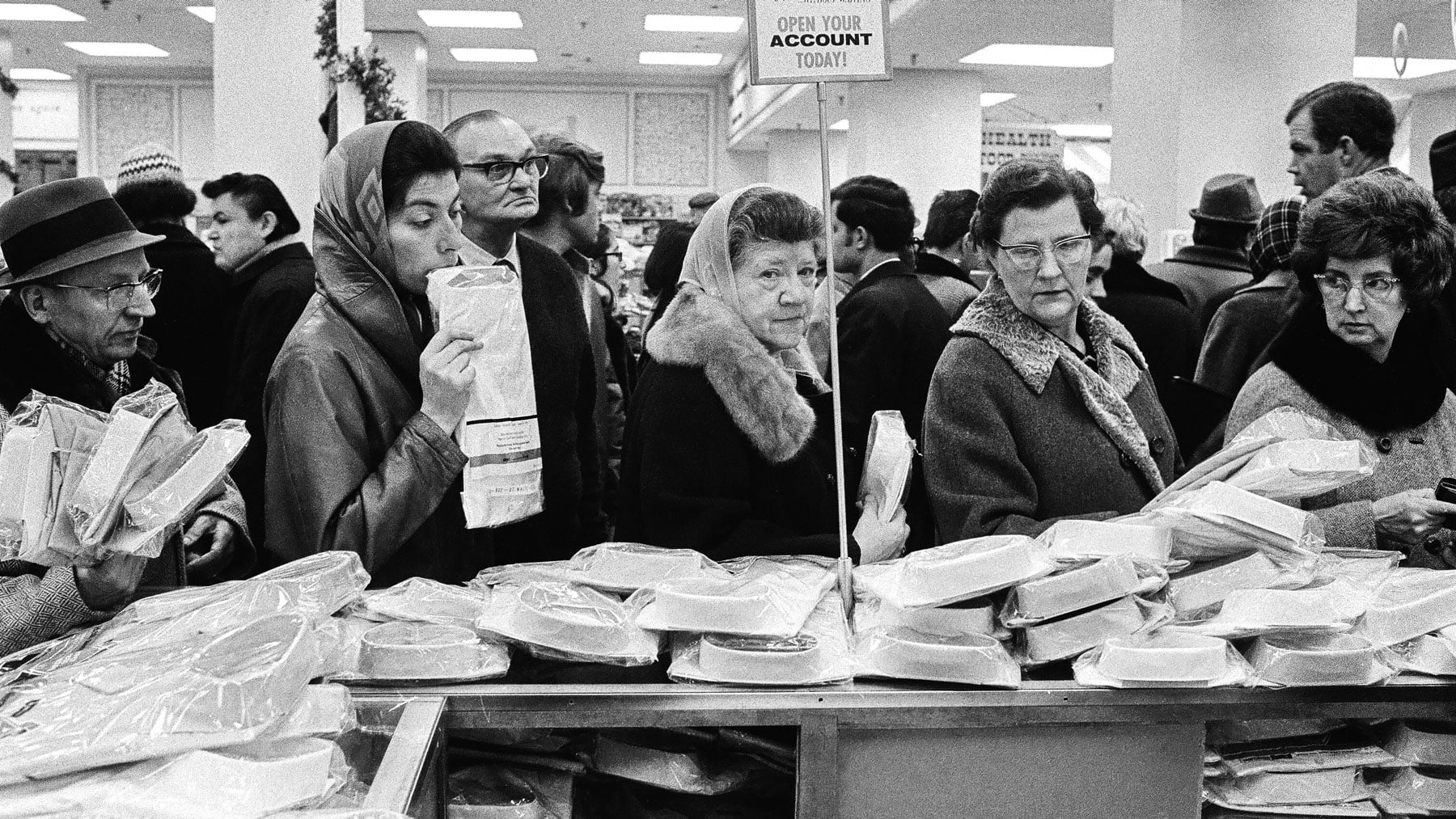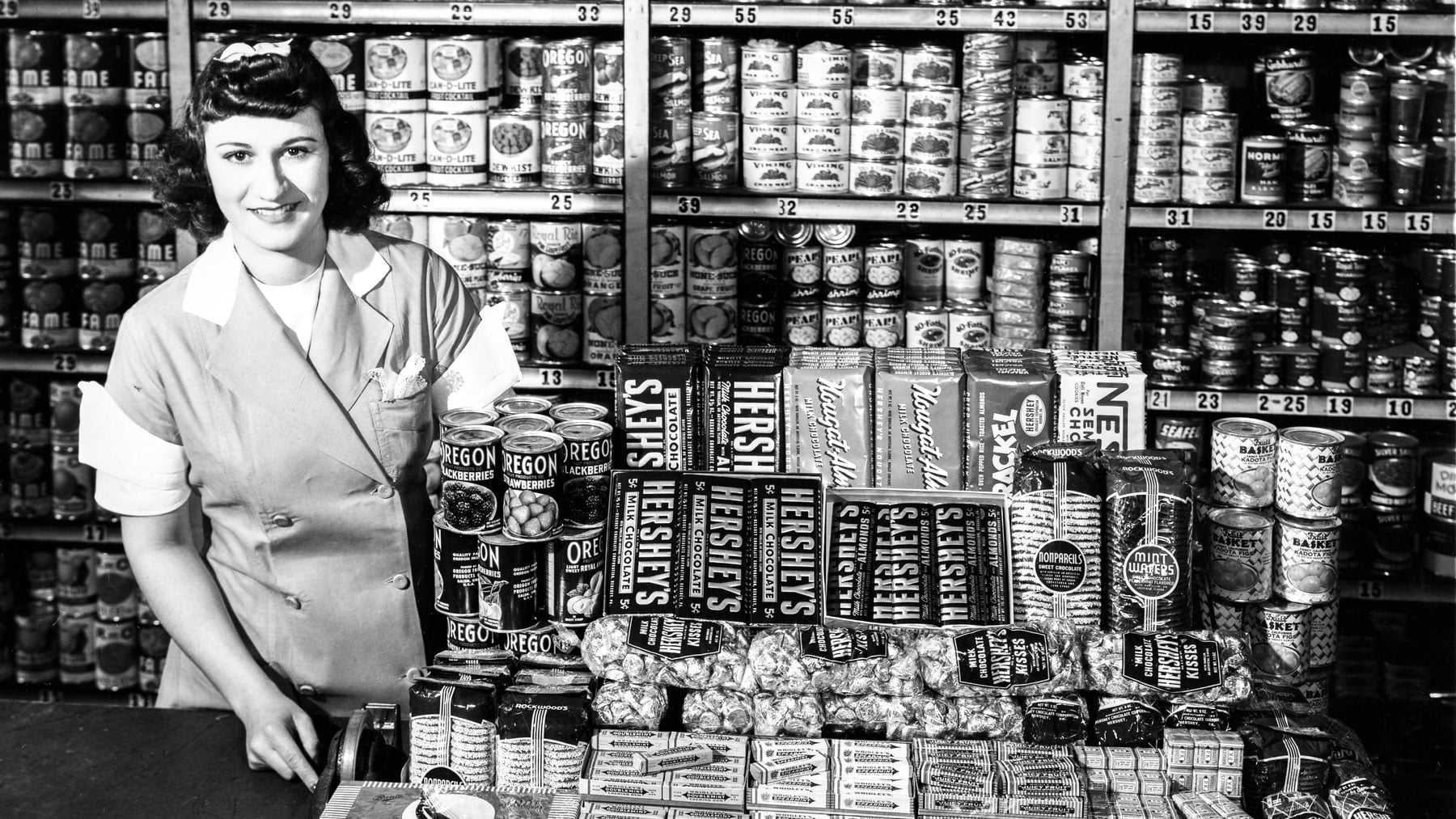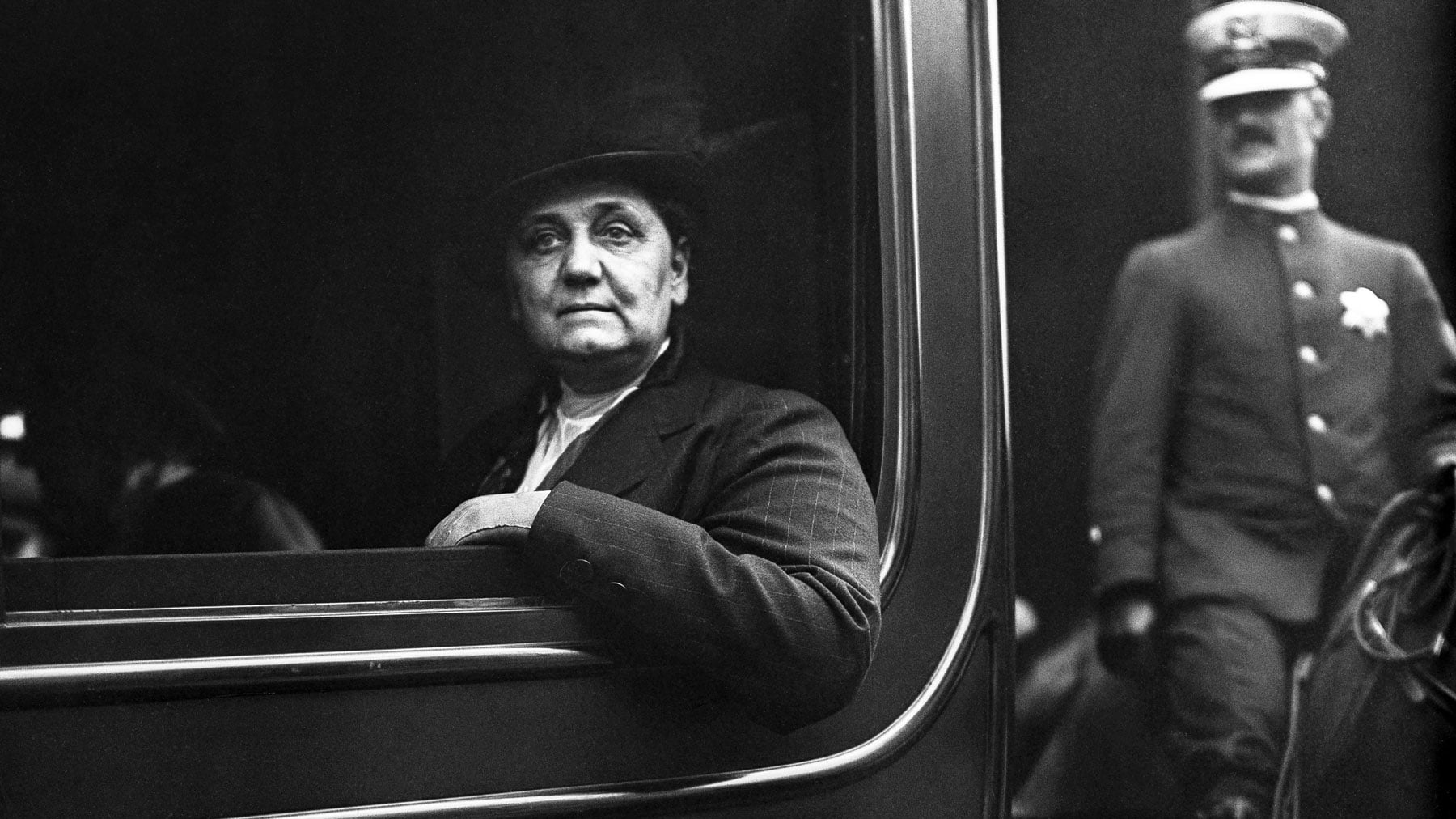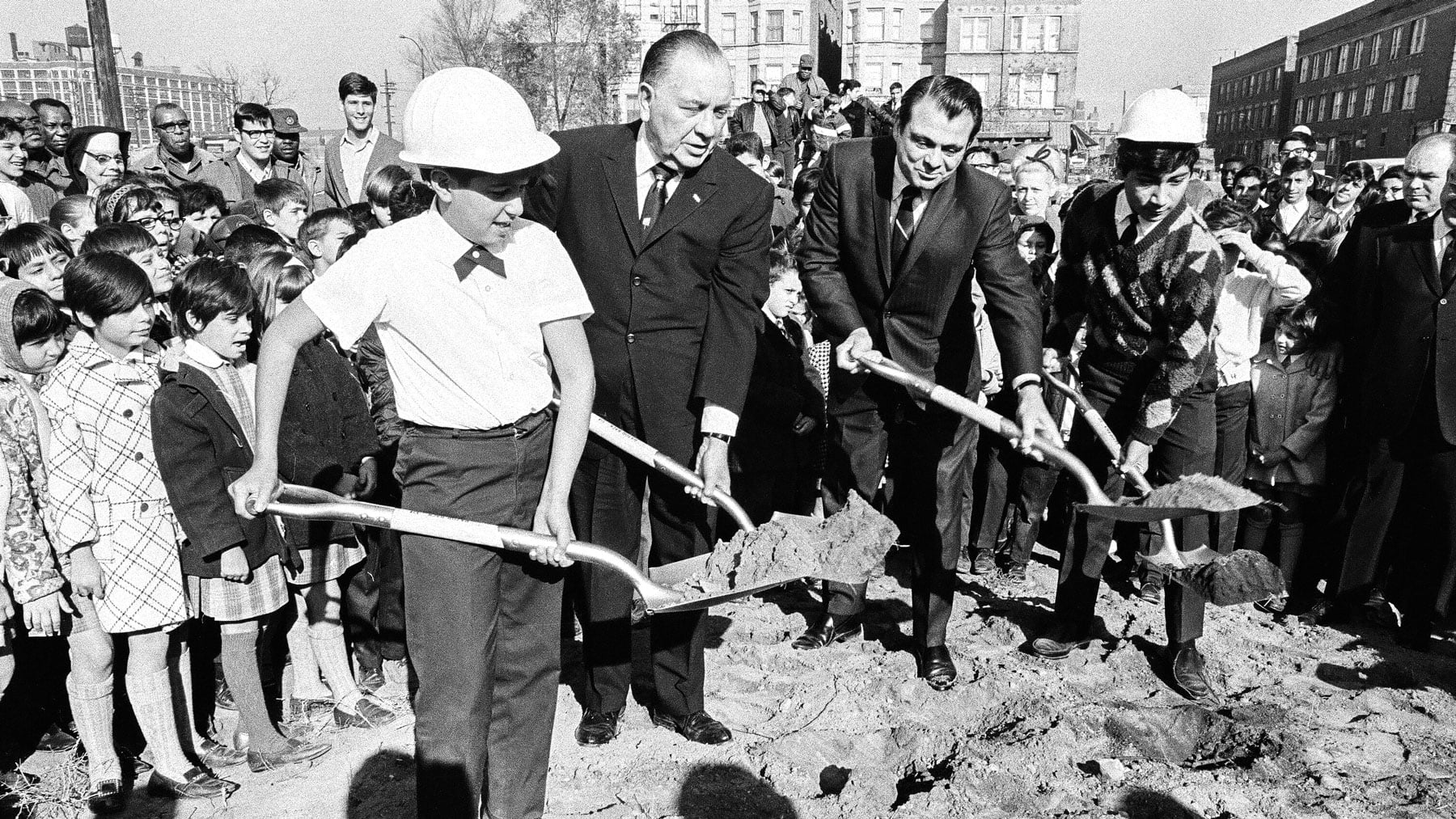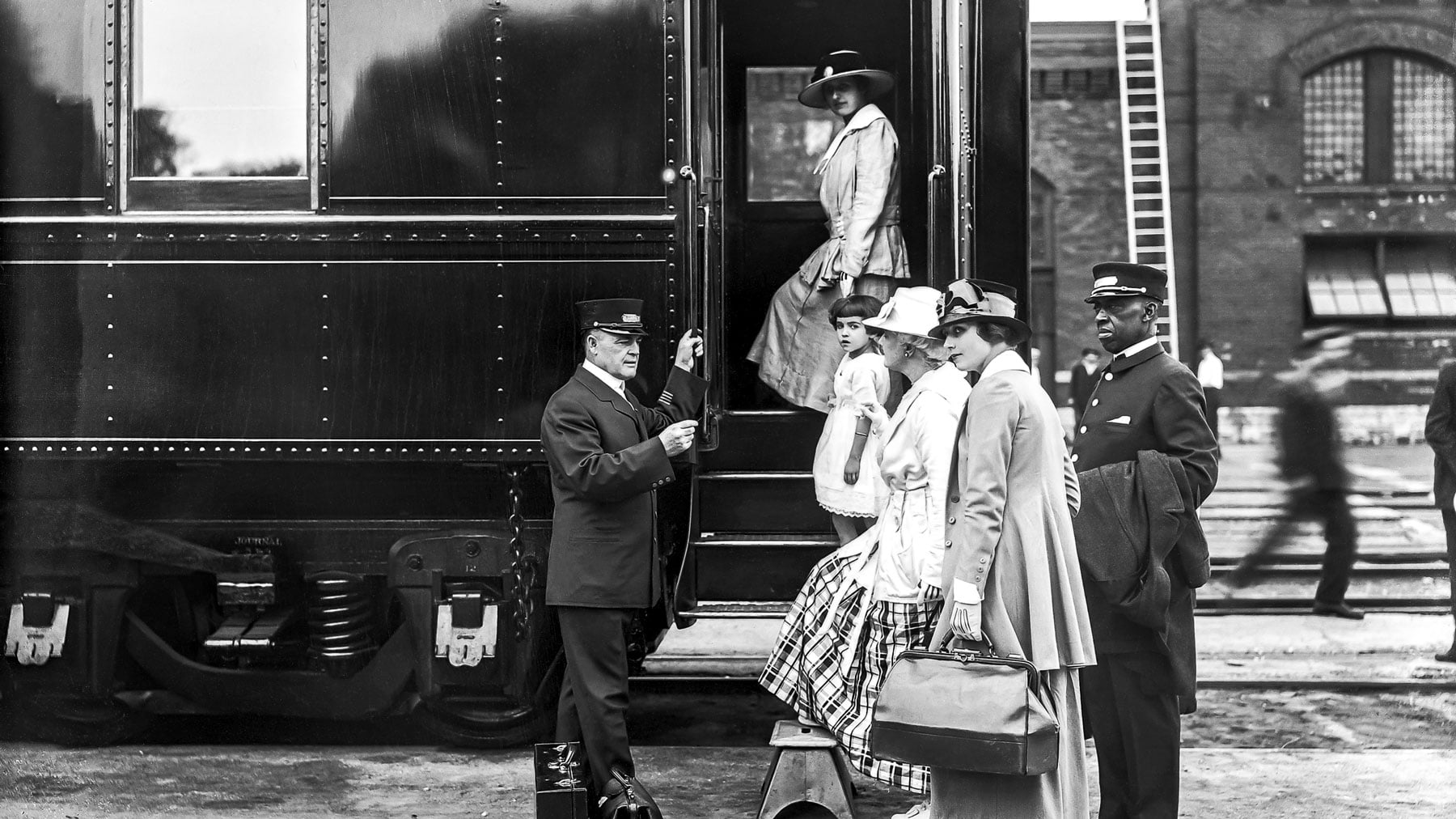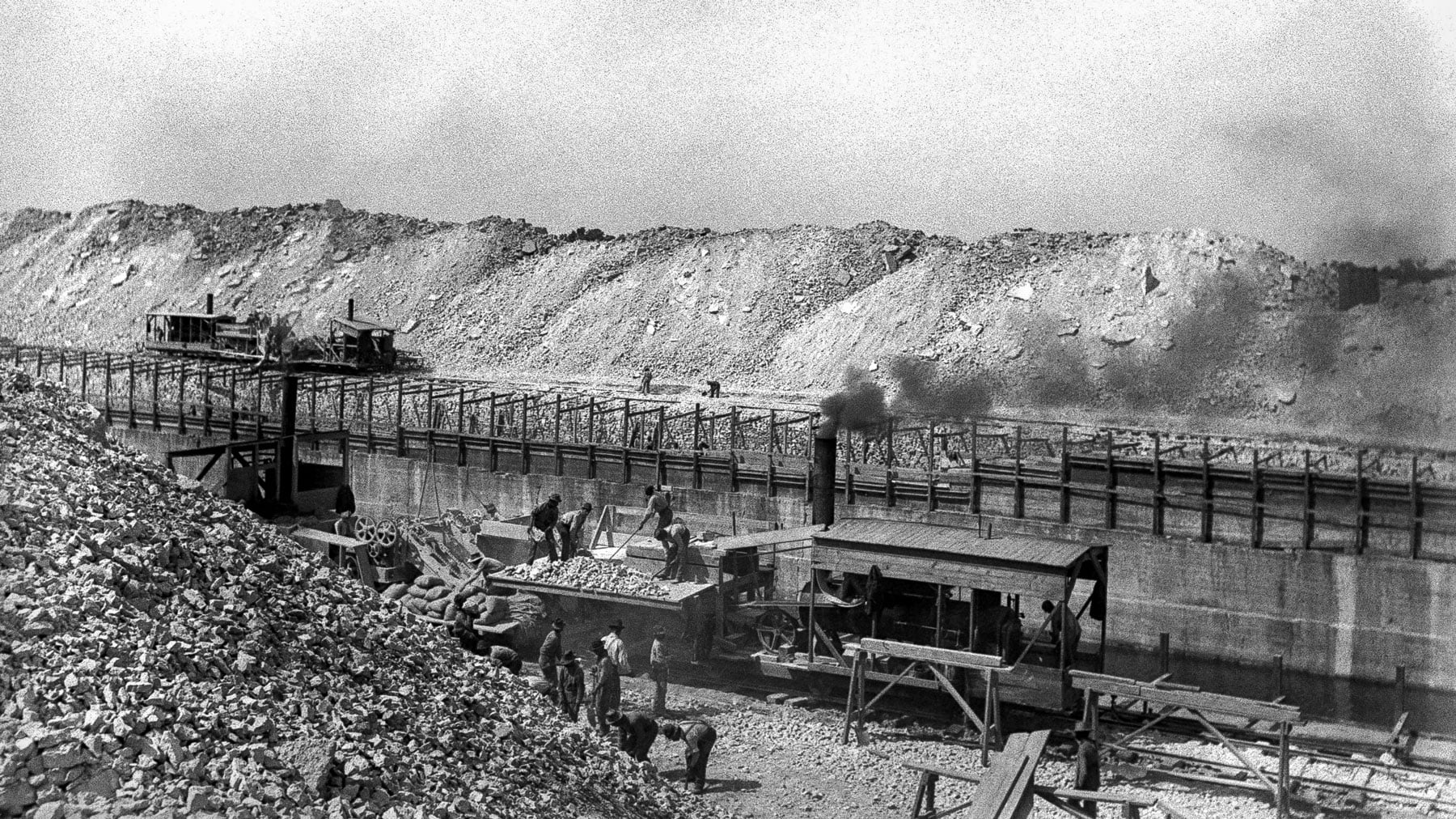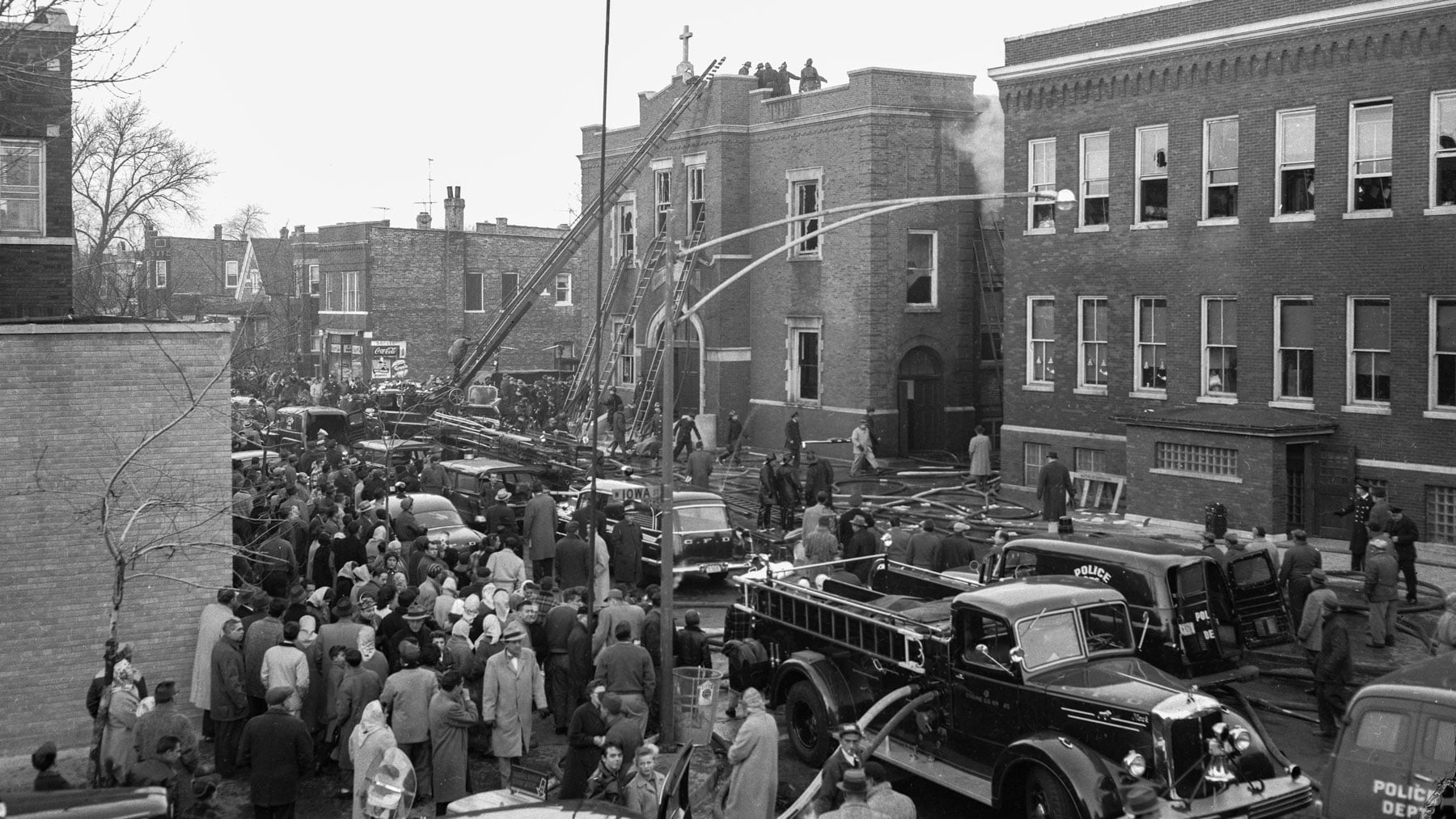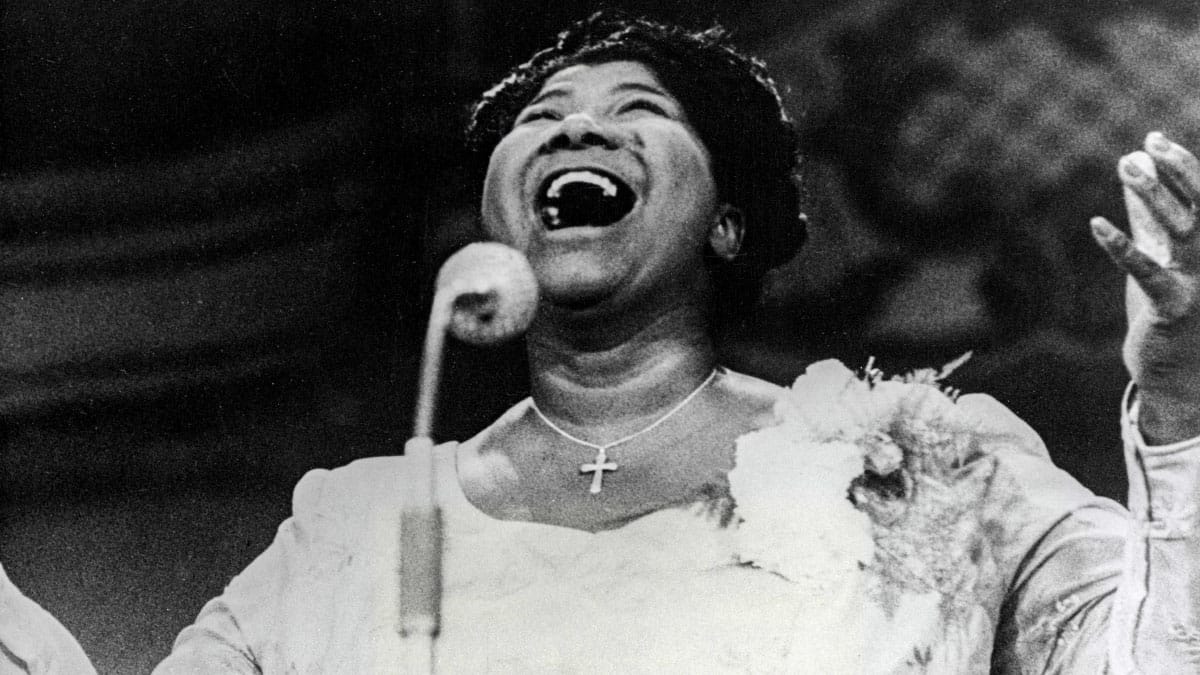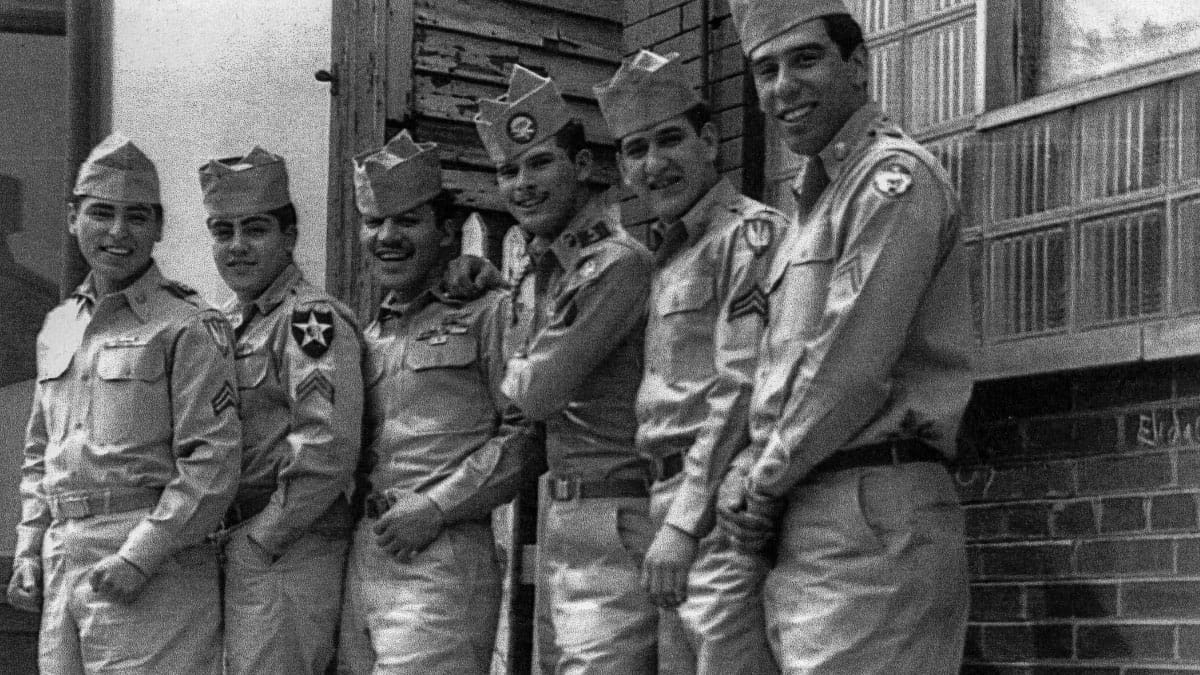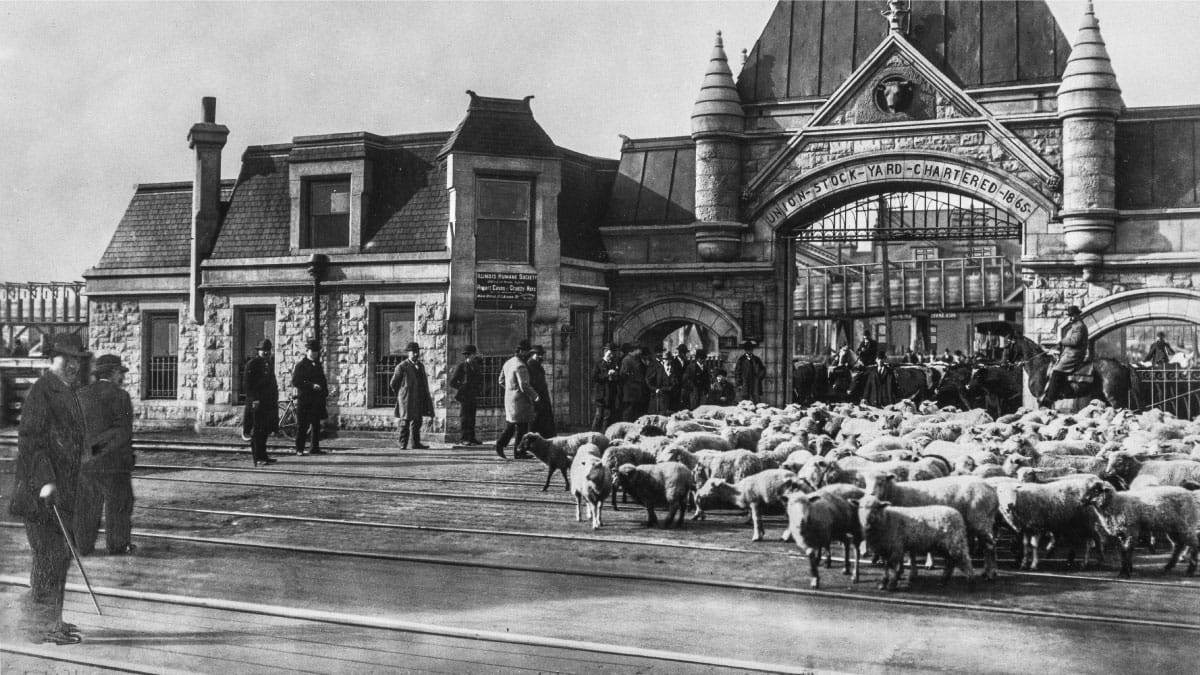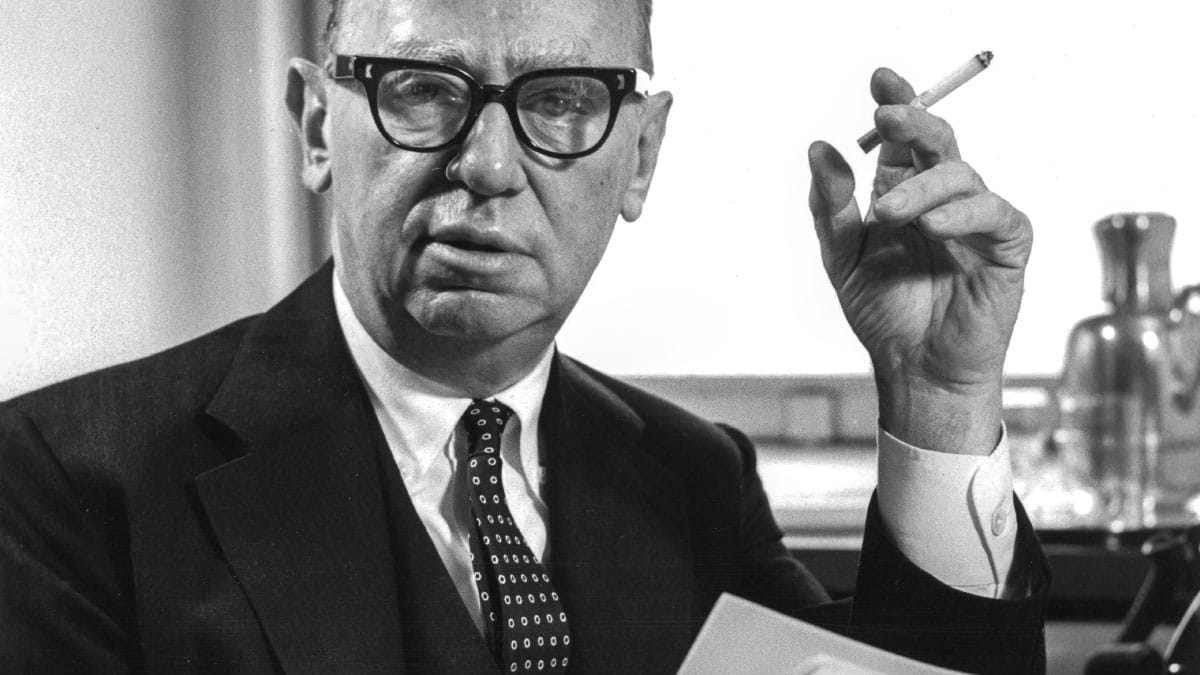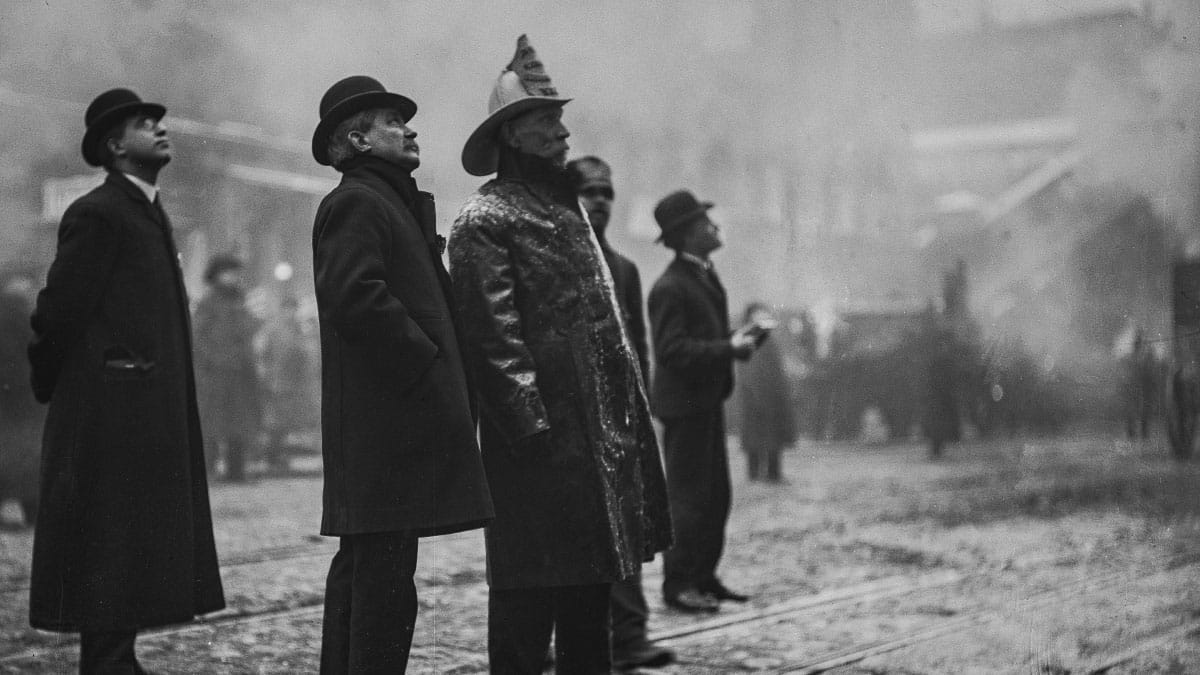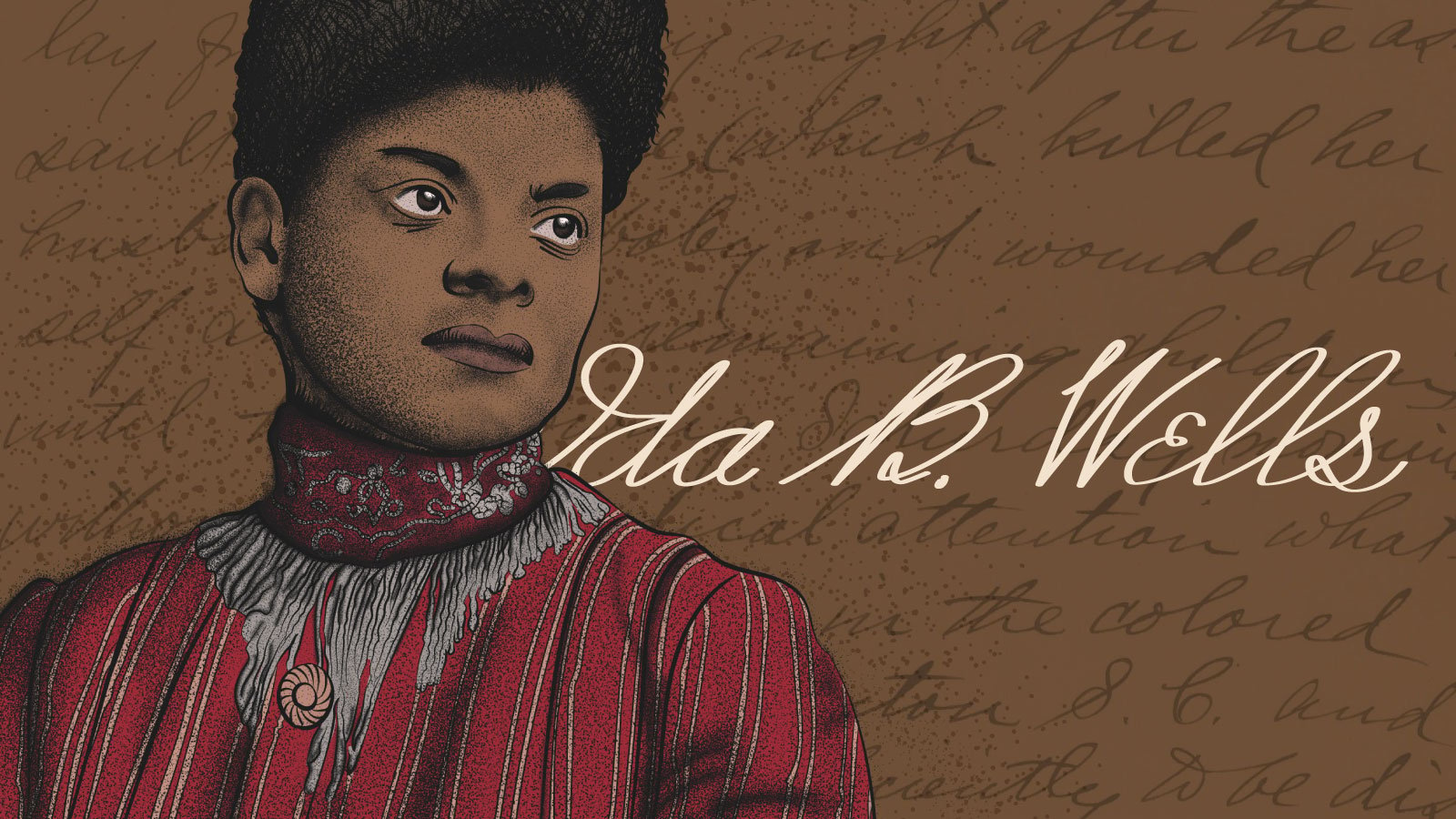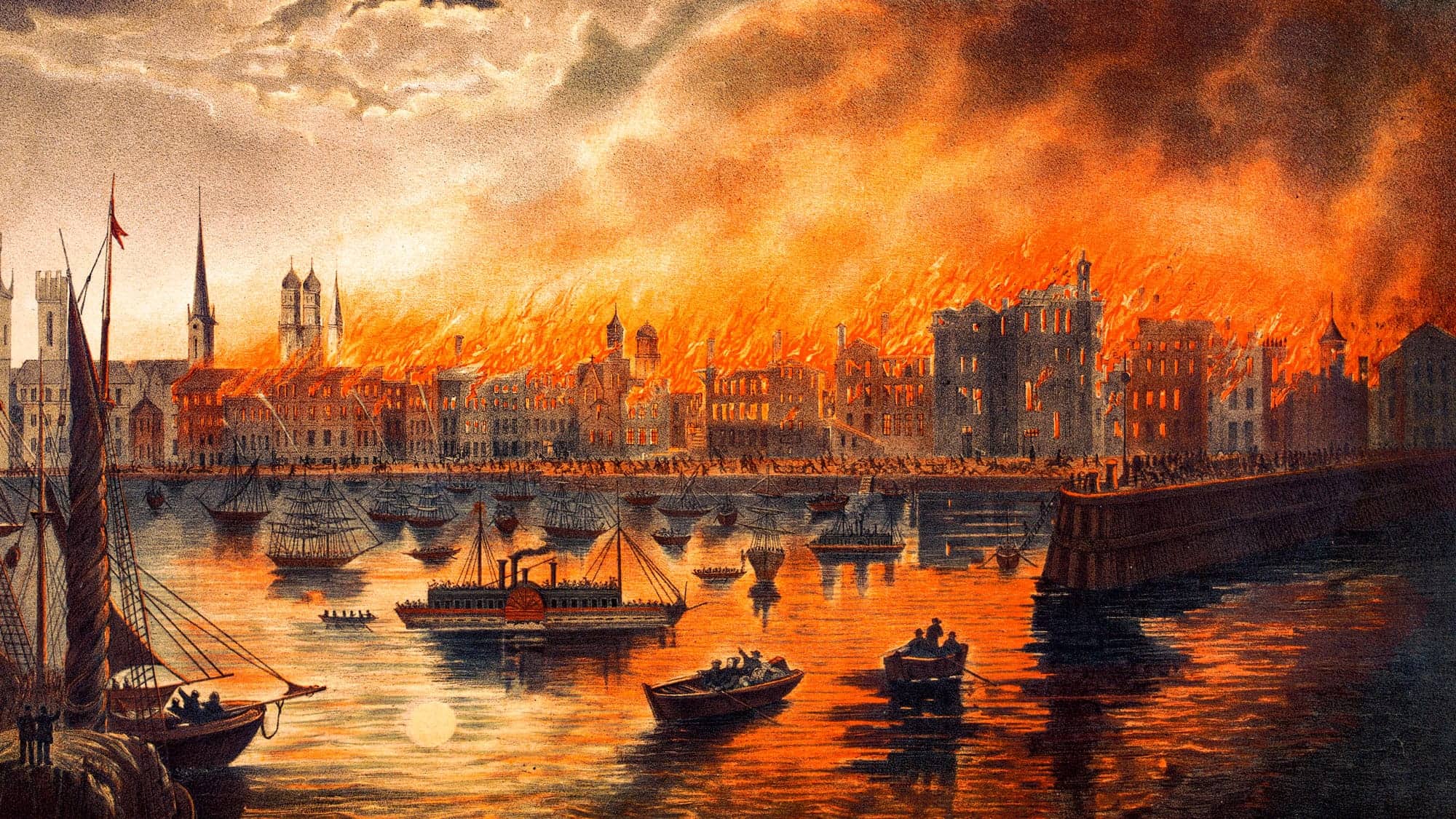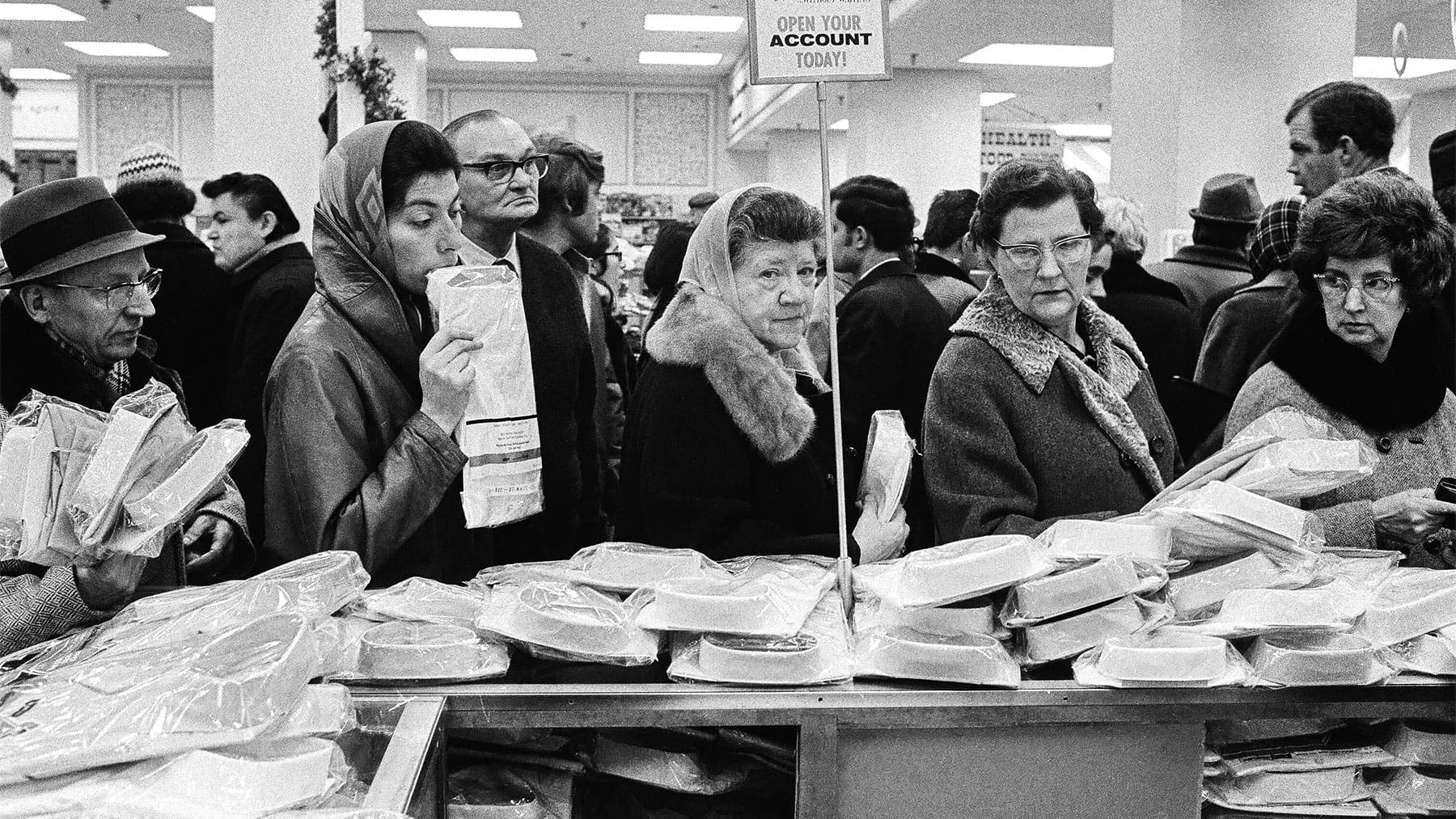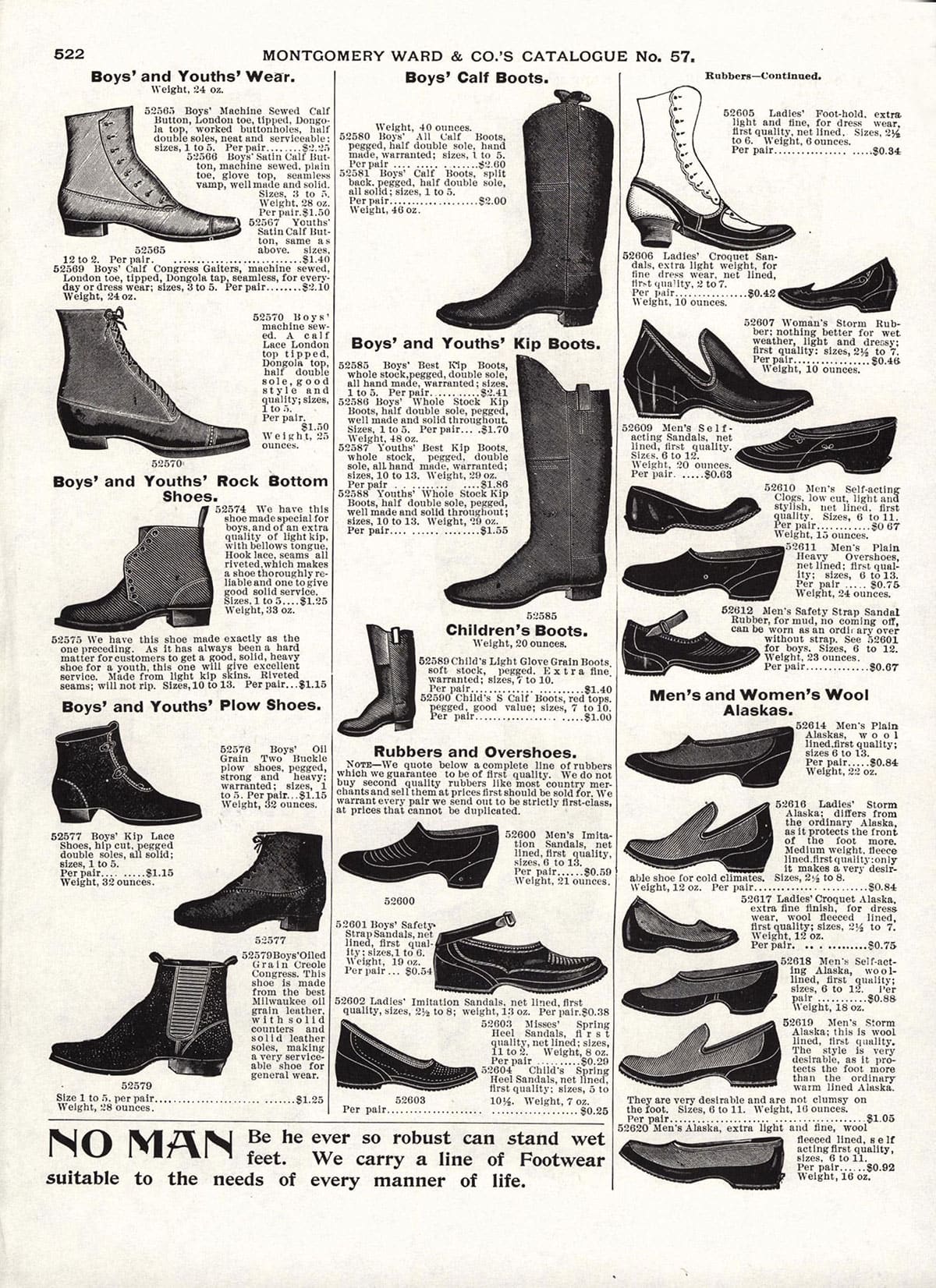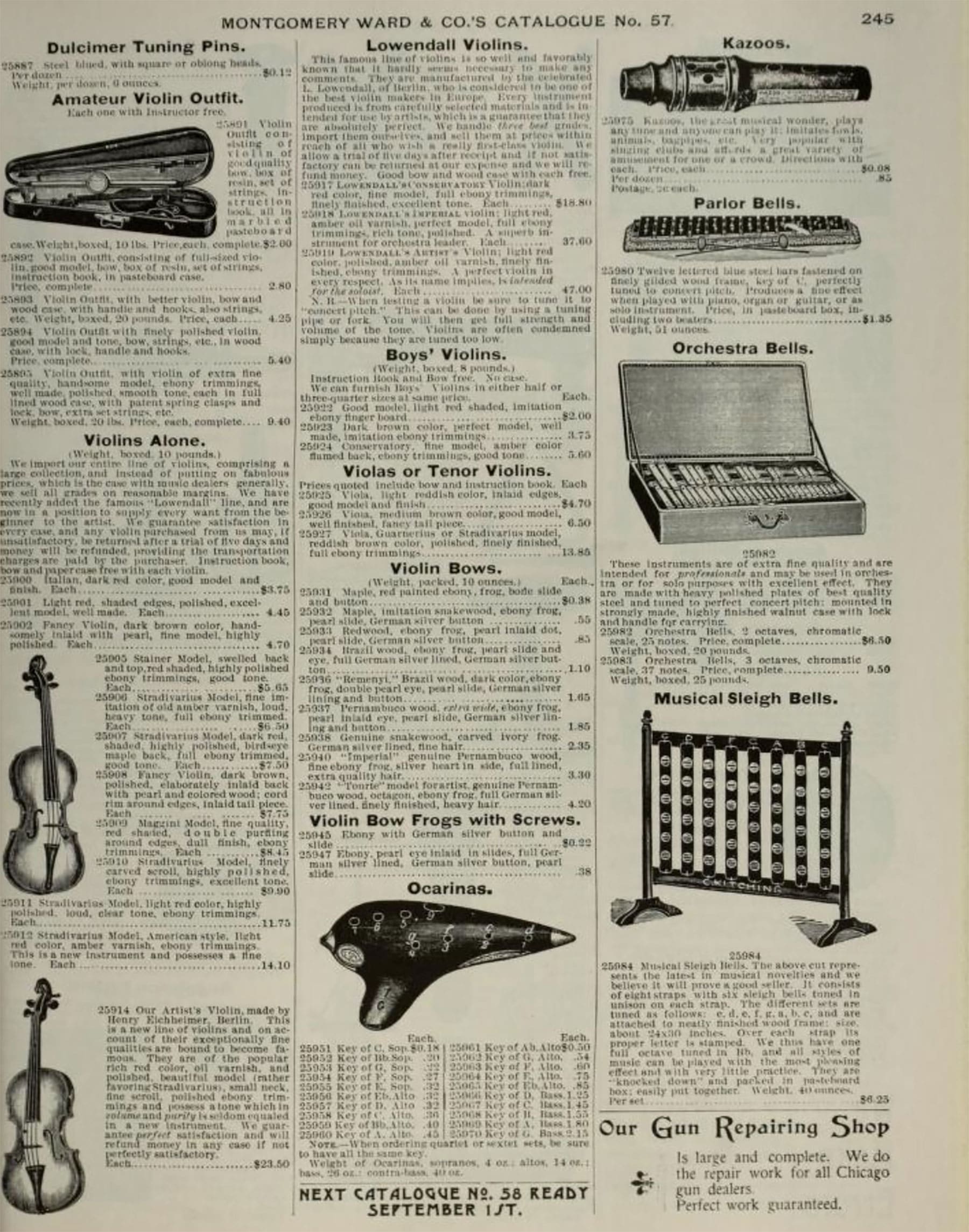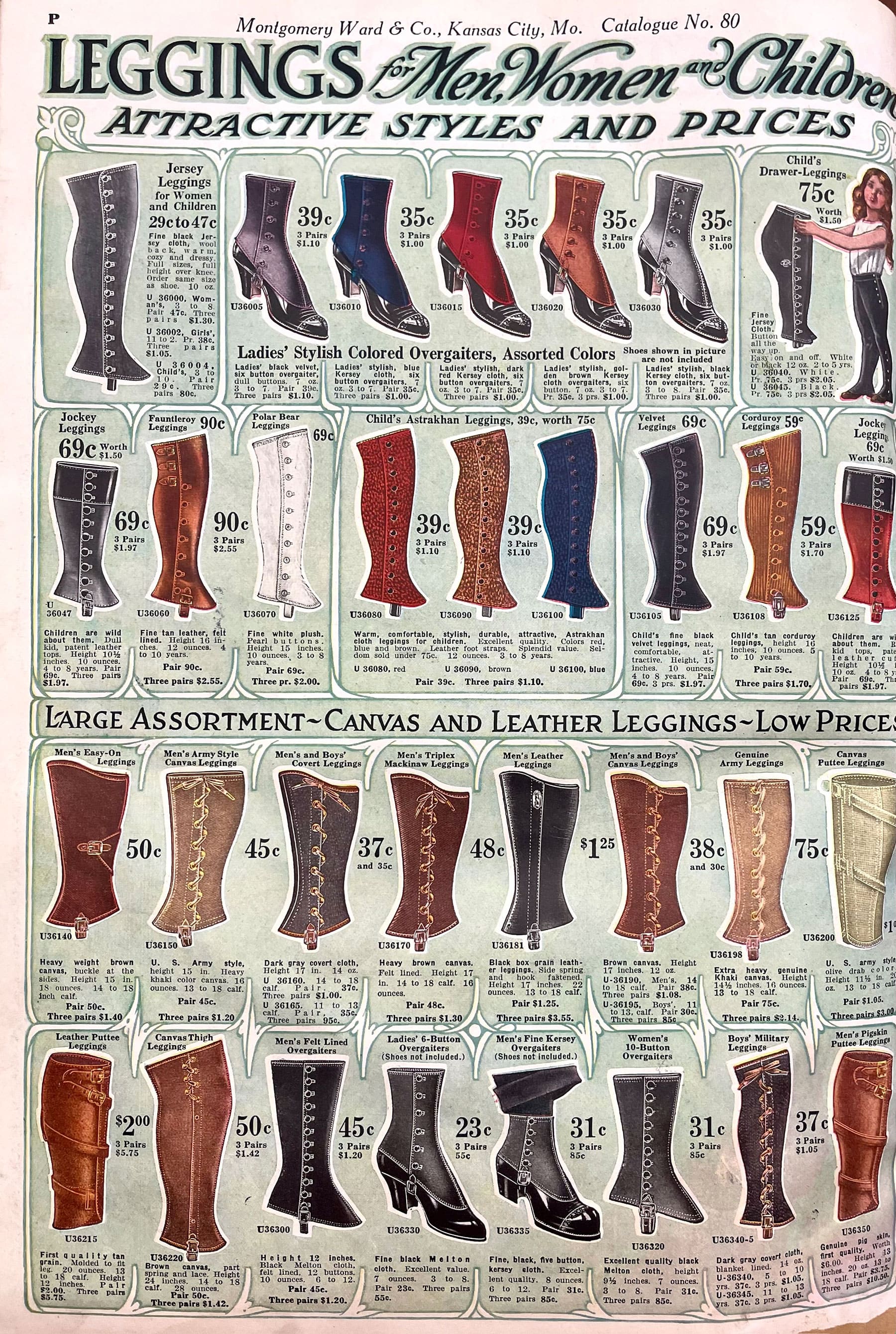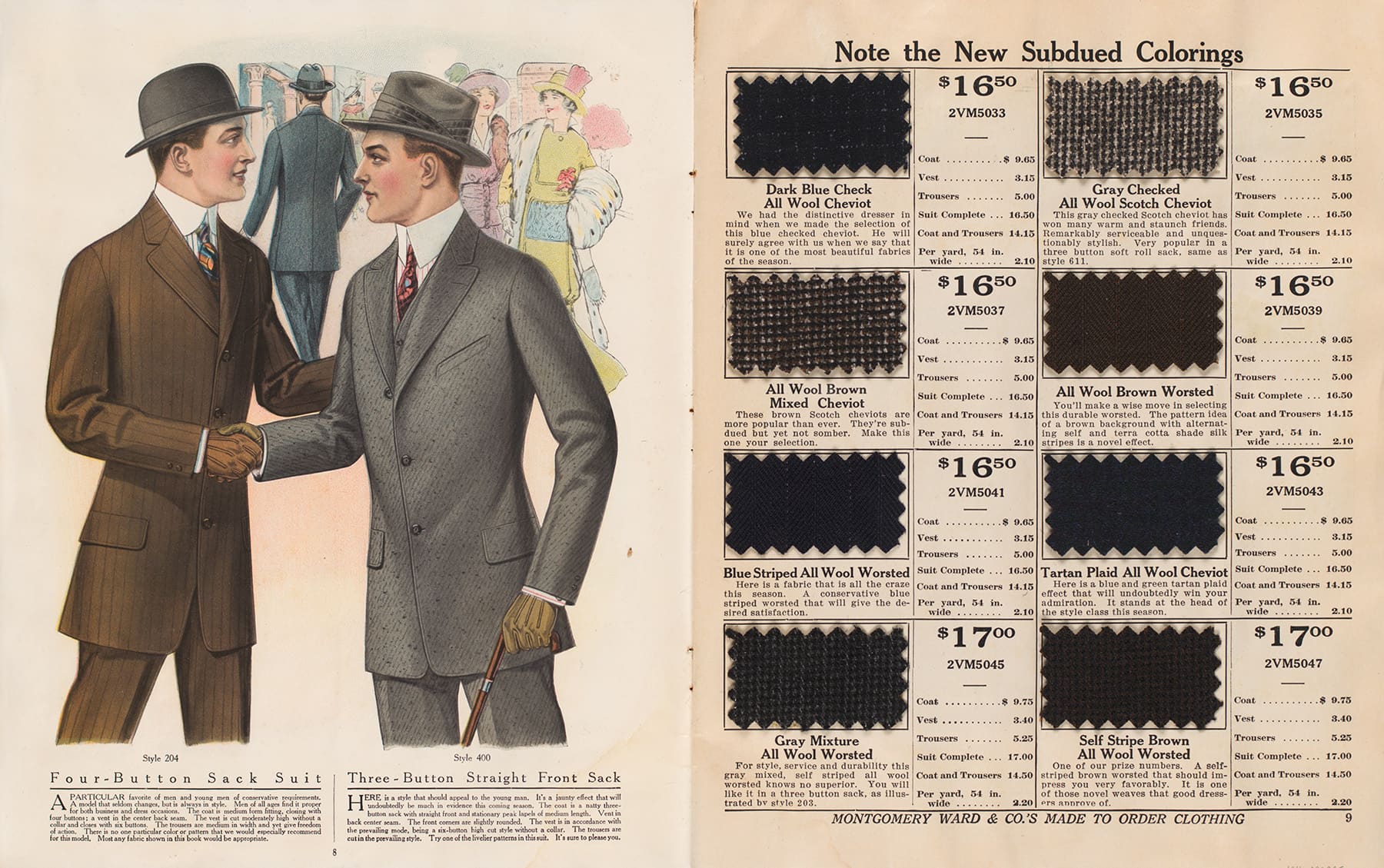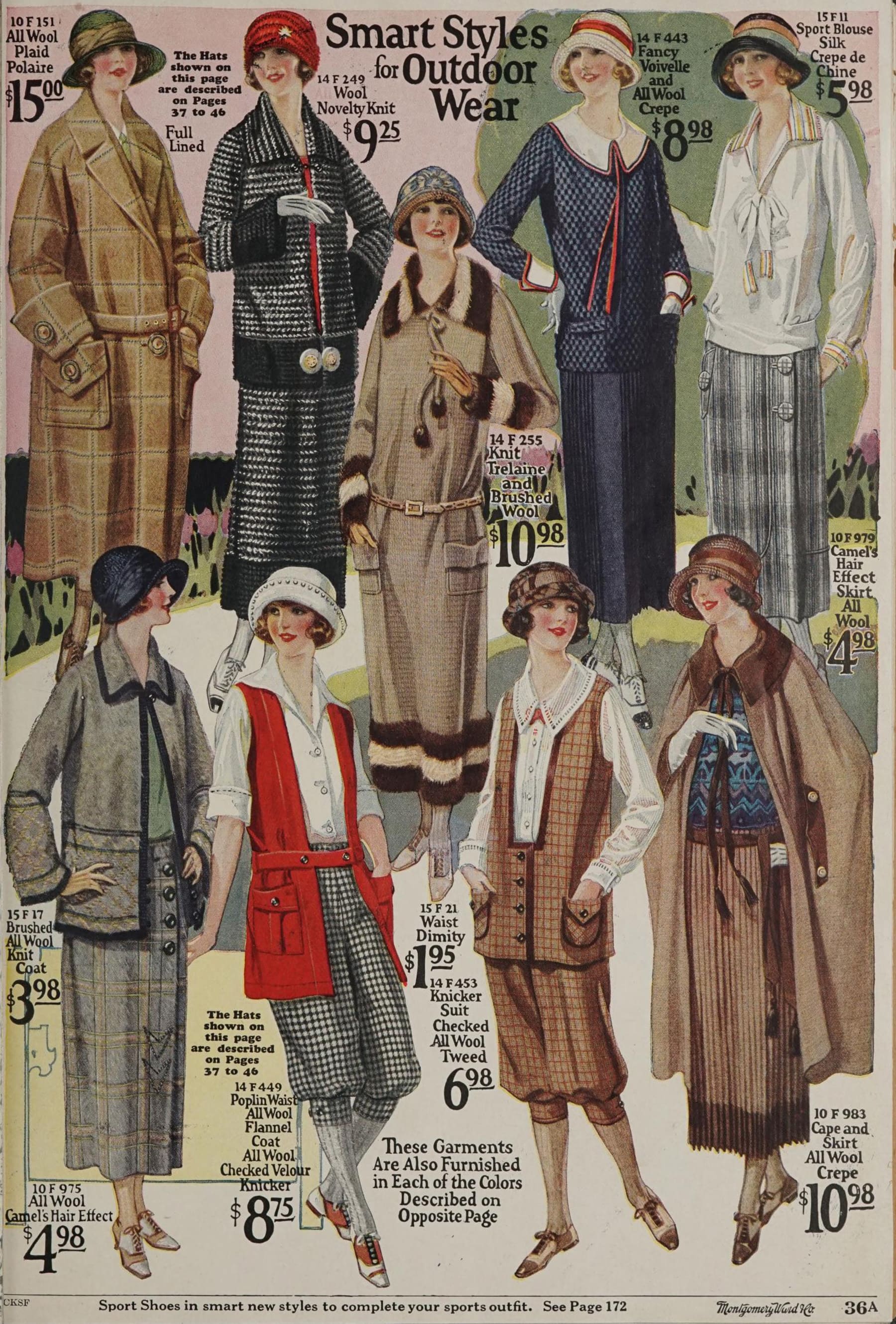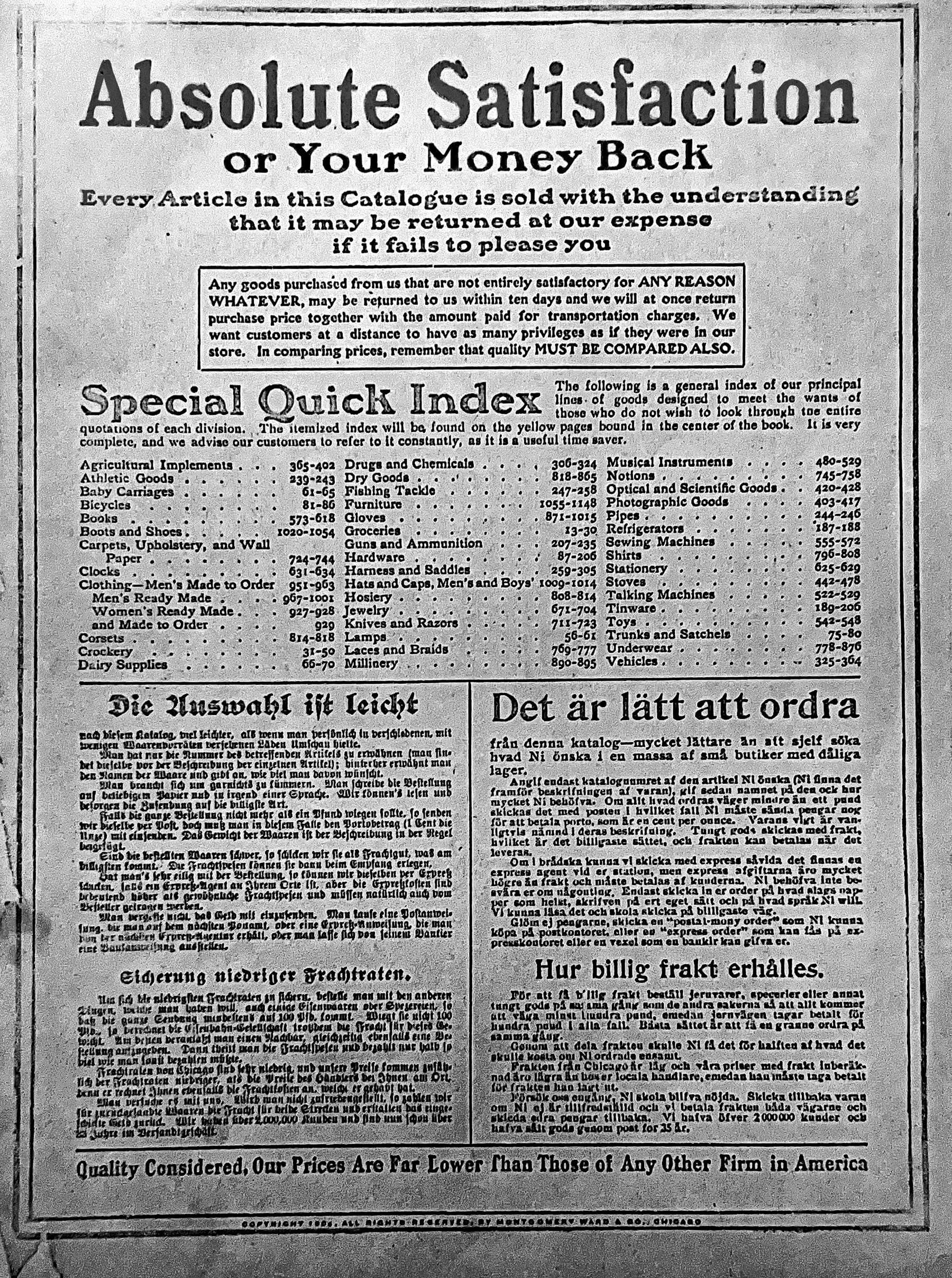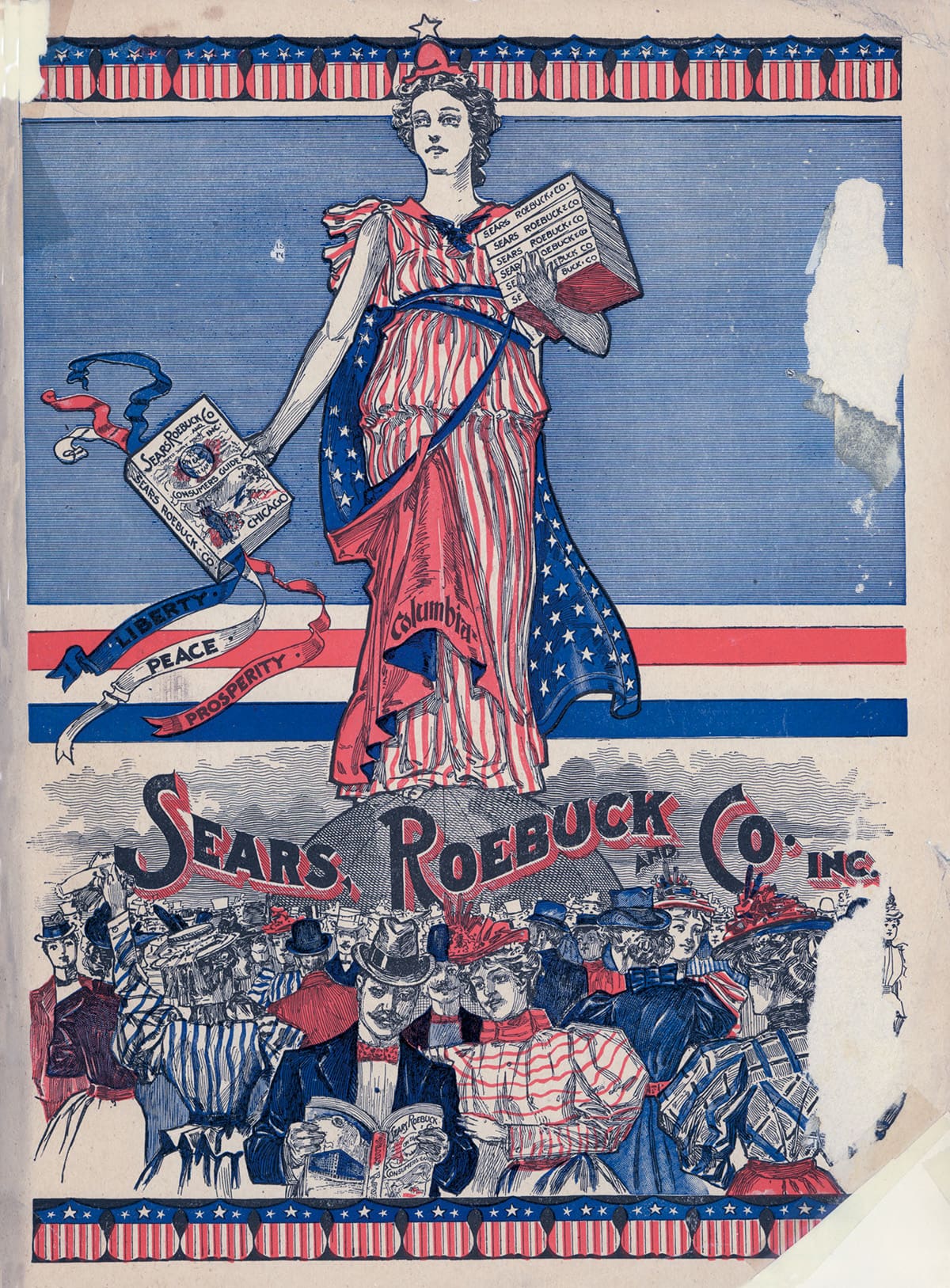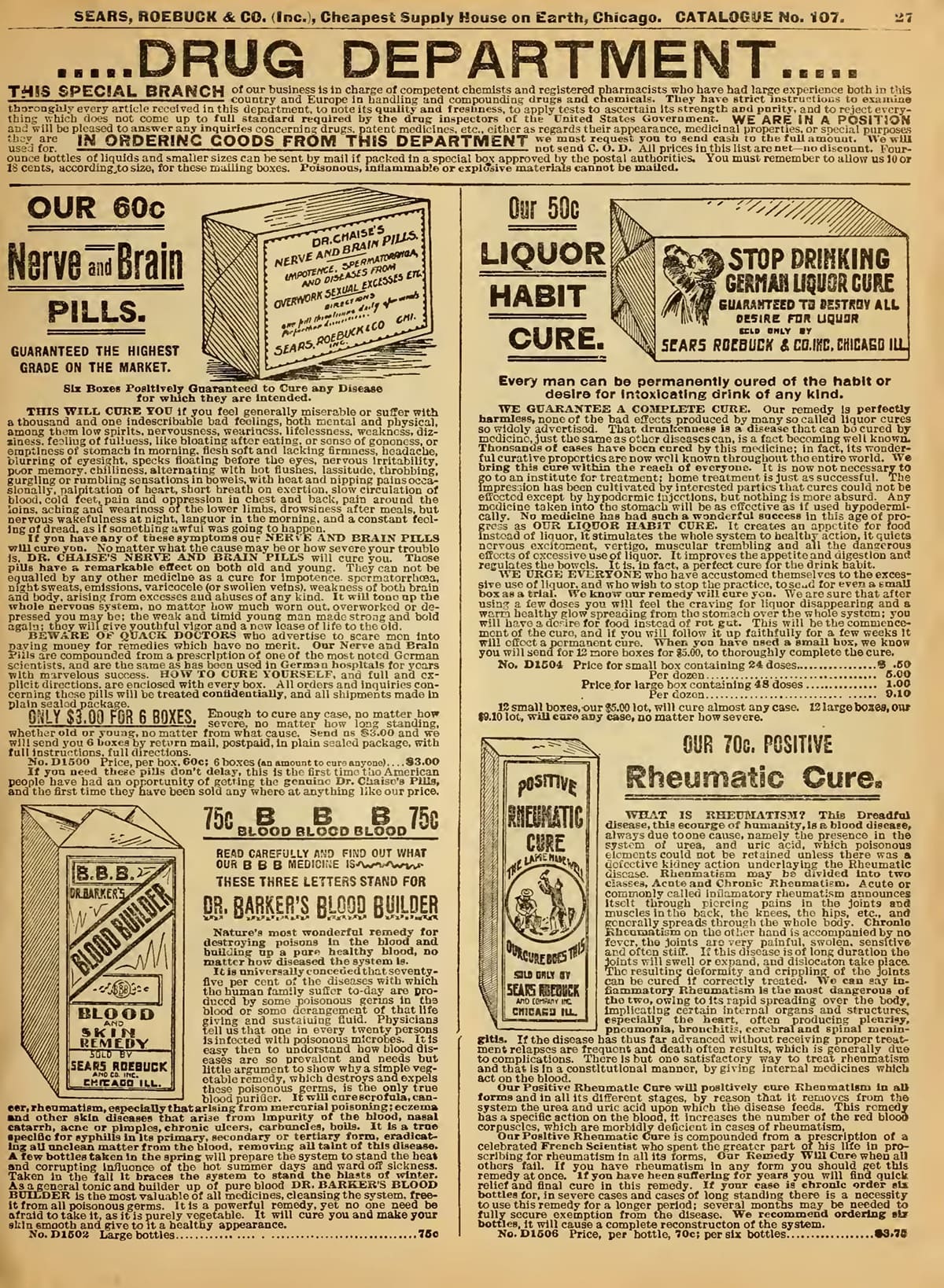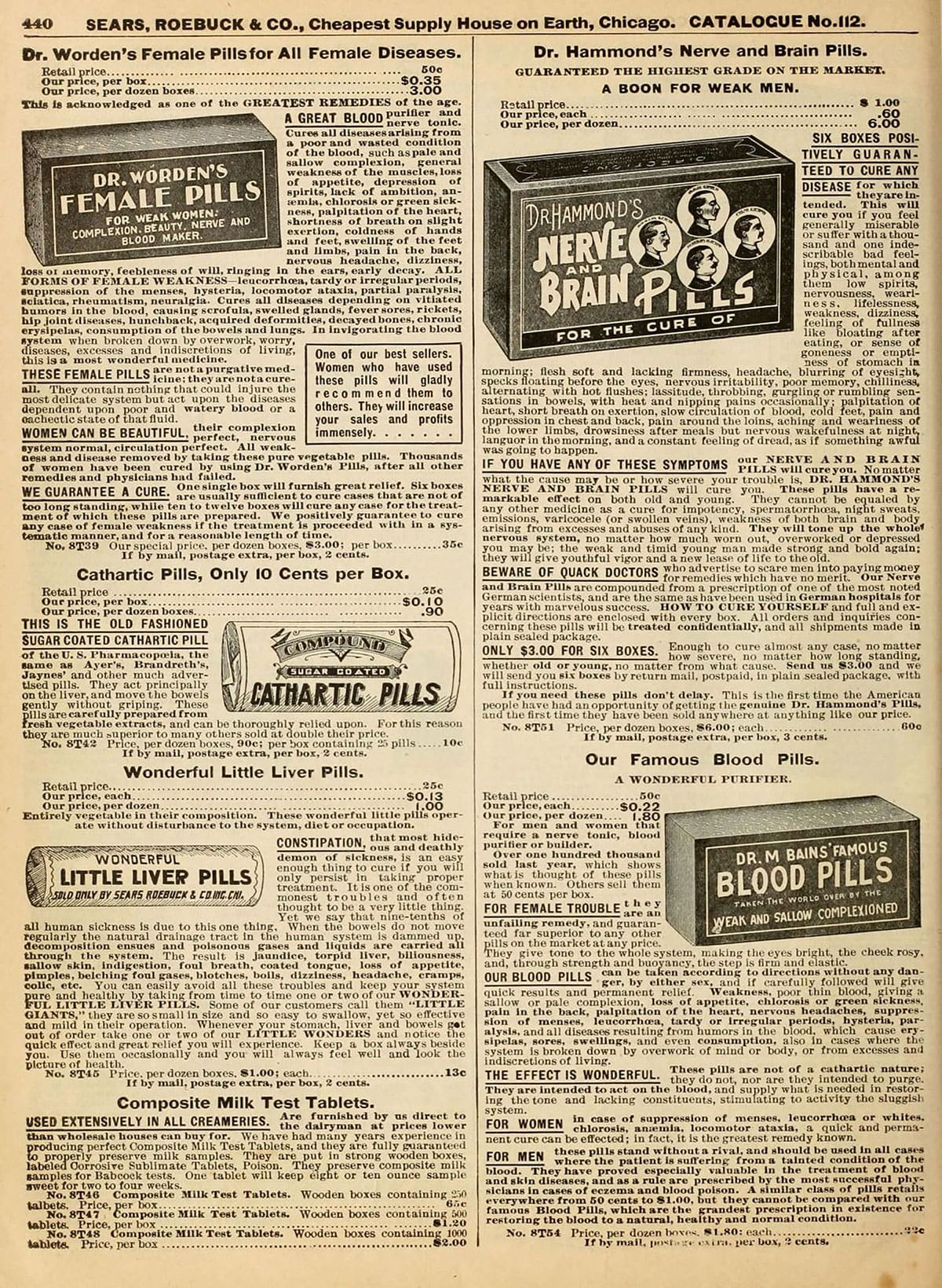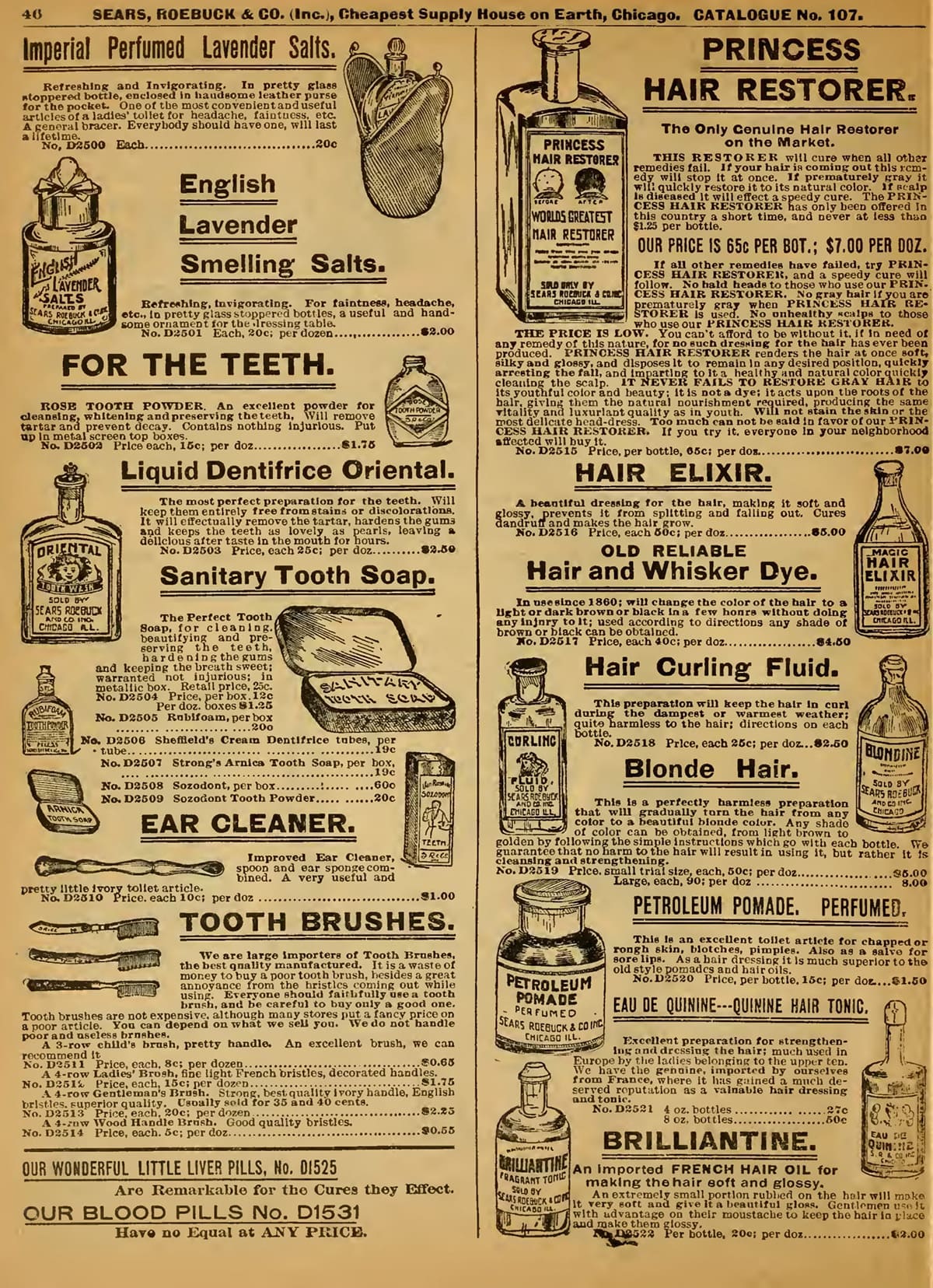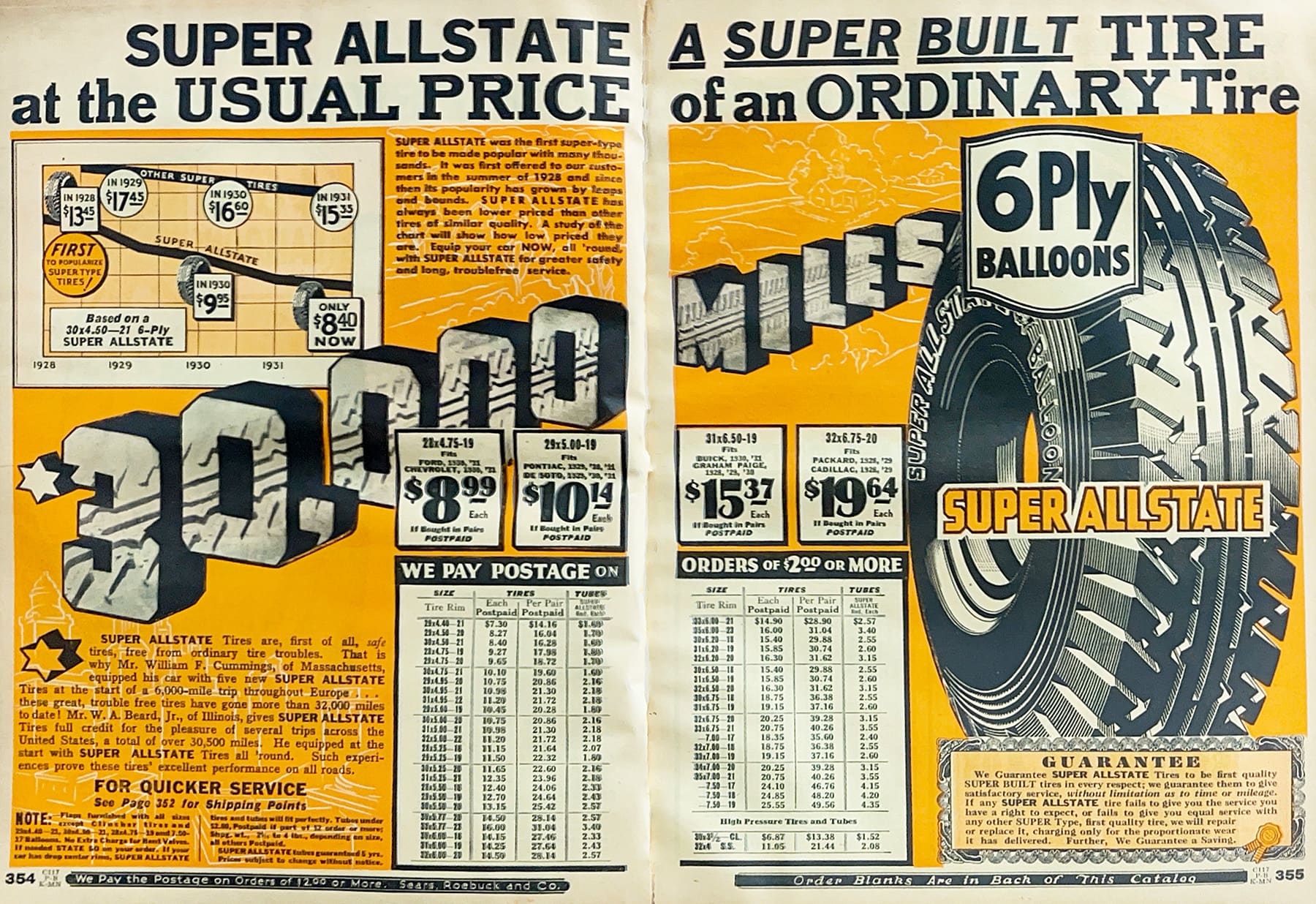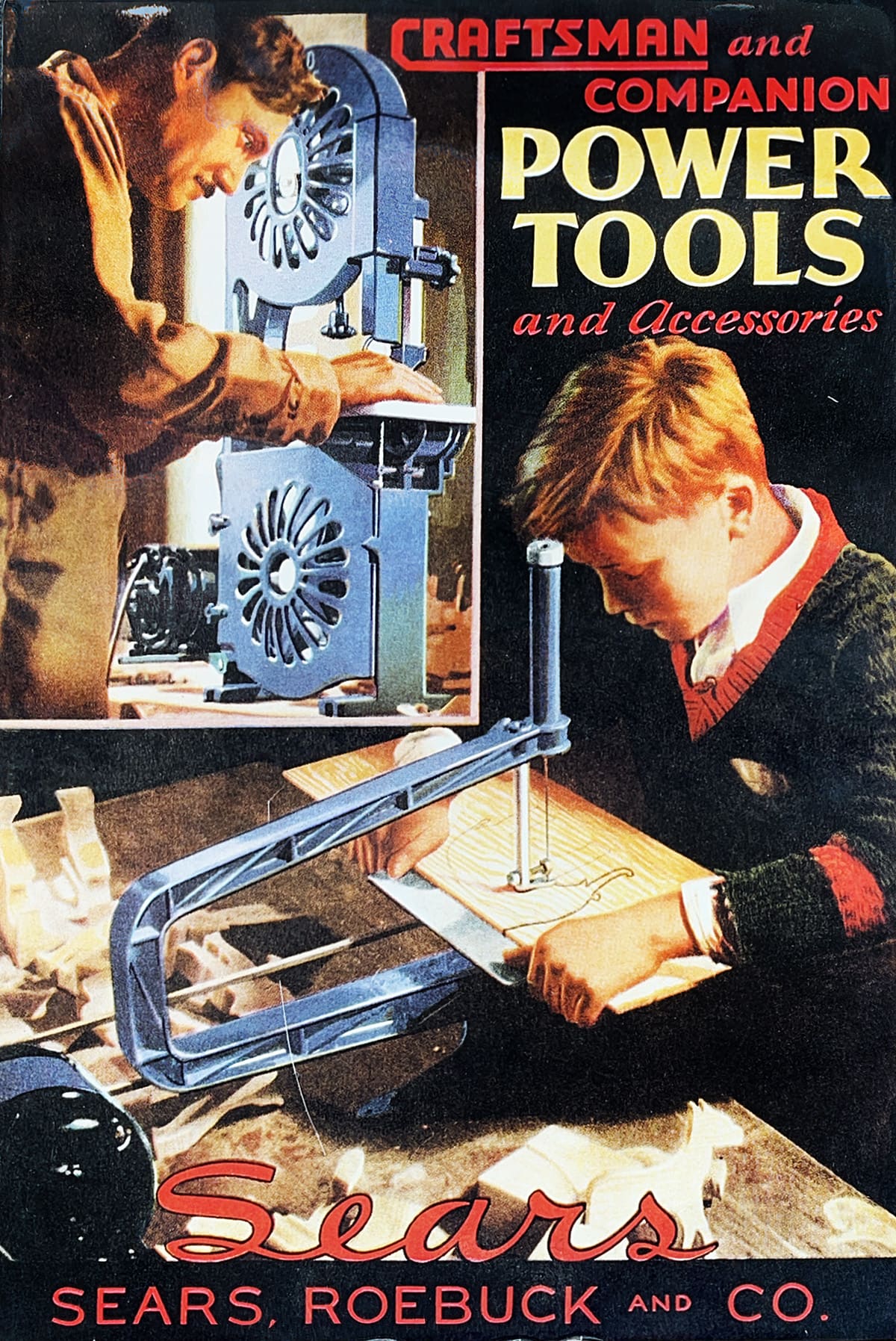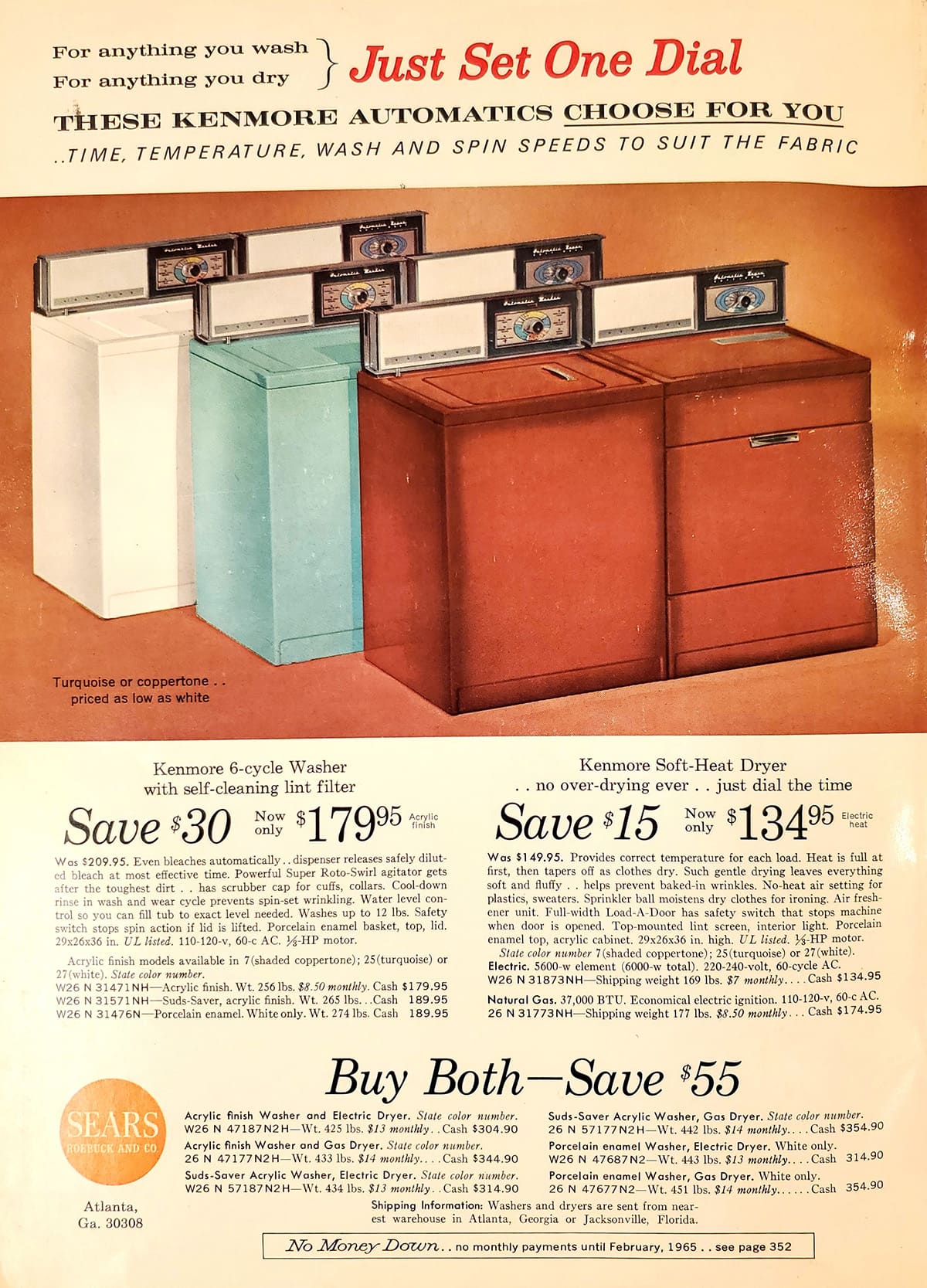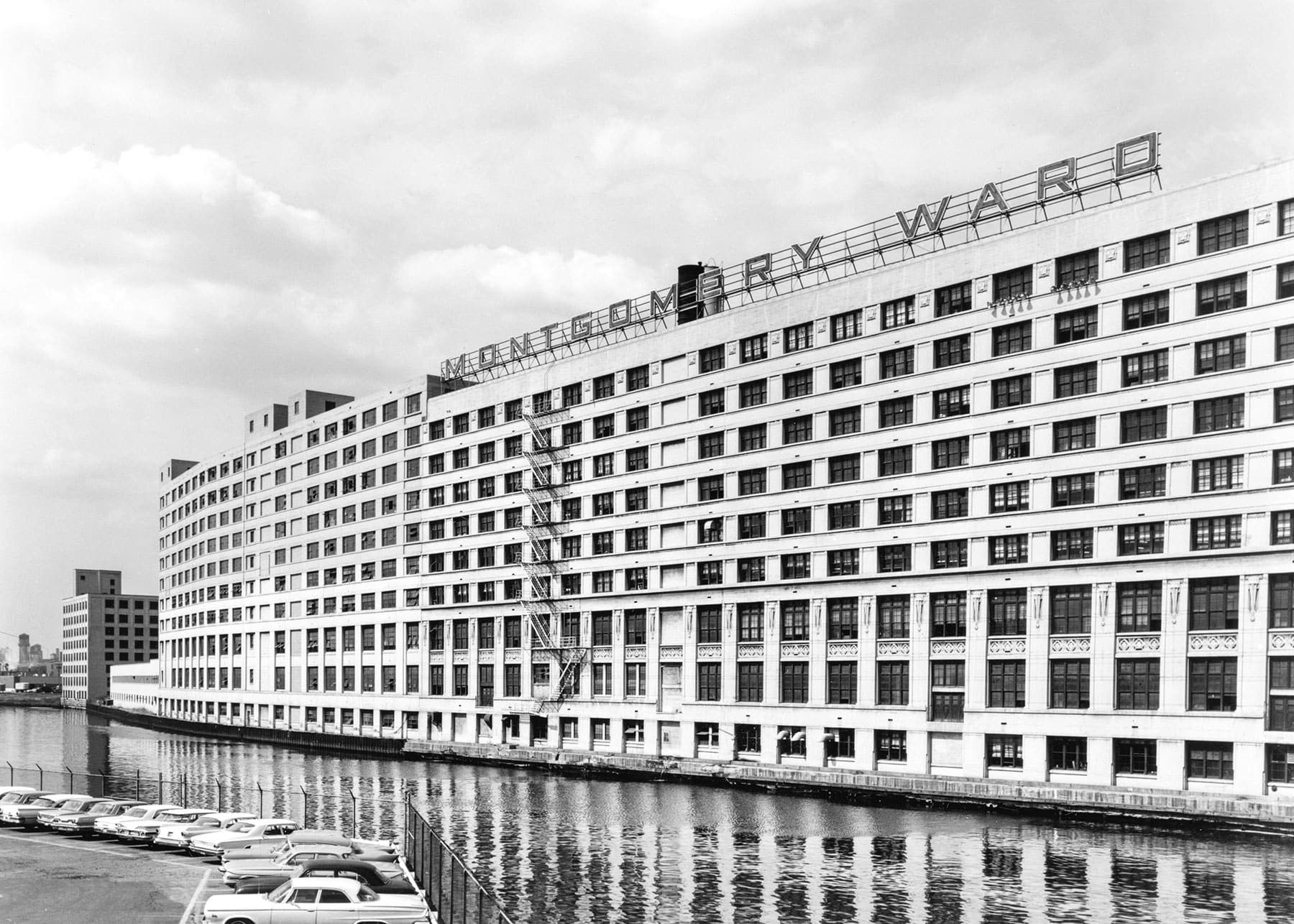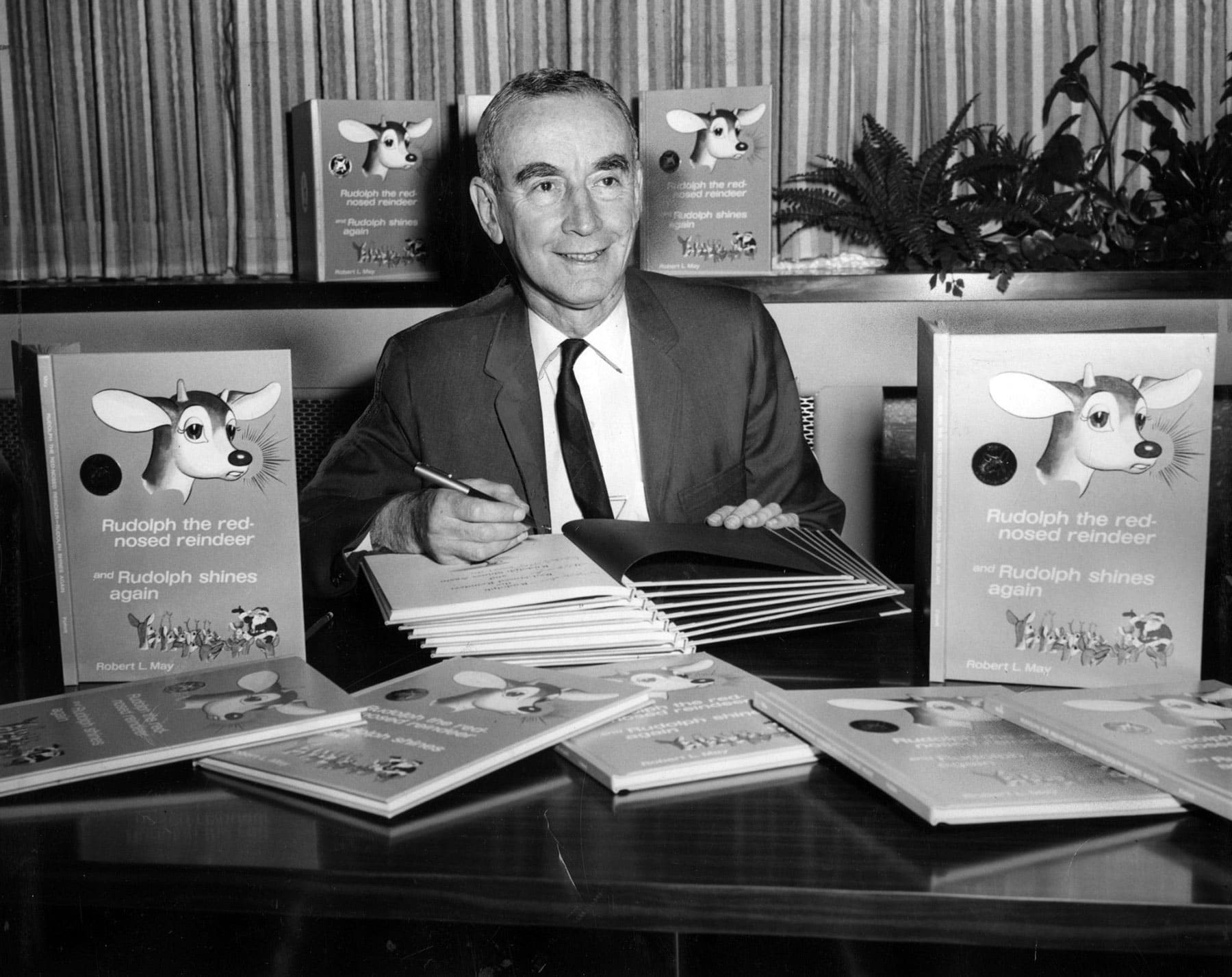In the late nineteenth century, Chicago’s location at the center of the country where railroads and industries converged made it an ideal location for entrepreneurs looking to make a buck – or millions of them. Aaron Montgomery Ward and Richard Warren Sears did just that. Each created a mail order catalog that evolved into a retail icon, changing American consumer habits along the way. While Sears and Montgomery Ward’s innovative ways of operating led to their rise as the Amazon of their time, new innovations would contribute to their decline a century later.
Meet the Businessmen
1844 Aaron Montgomery Ward Is Born
Born in New Jersey, in 1844 to a large farm family that later moved to Michigan, Aaron Montgomery Ward got his start with a series of odd jobs for a barrel-stave maker and brickyard. Ward moved to Chicago in his early twenties and got a job as a traveling salesman at Field, Palmer, Leiter & Company, which was the predecessor to Marshall Field and Company. It was this experience selling products to far-flung rural areas, combined with his own upbringing on a farm, that would inspire him to start his own business.
1862 Julius Rosenwald Is Born
Julius Rosenwald, a prominent businessman and important philanthropist in Chicago, was born in 1862 to German-Jewish immigrant parents in Springfield, Illinois, just around the corner from Abraham Lincoln’s home. According to the Encyclopedia of Chicago, his parents were in the clothing business, and he would follow suit, eventually moving to Chicago in 1885 to run his own clothing store.
1863 Richard Sears Is Born
Born in 1863 in Minnesota, Richard Warren Sears was the son of a blacksmith and grew up in poverty after his father went bankrupt. He worked from a young age, educating himself at night, and eventually began working at a local train station, first as a telegraph operator and later as a station agent. His luck changed when a local jewelry store declined to accept a shipment of watches. As the station agent, Sears dealt with unwanted merchandise, so he purchased the rejected watches from the manufacturer at a discount. He began selling the watches, which were in high demand for people traveling by train, especially with the recent advent of time zones in the United States. He sold them by mail, taking out advertisements in newspapers and marketing them as high-quality watches at a low price. Within six months, Sears made $5,000.
1864 Alvah Roebuck Is Born
Alvah Roebuck was born in Lafayette, Indiana, in 1864. A self-taught watchmaker, he later went to work at a Hammond, Indiana, jewelry shop. When Richard Sears advertised in 1887 for someone who could repair watches, Roebuck answered the call and created a watch for Sears as part of the interview. He was hired on the spot.
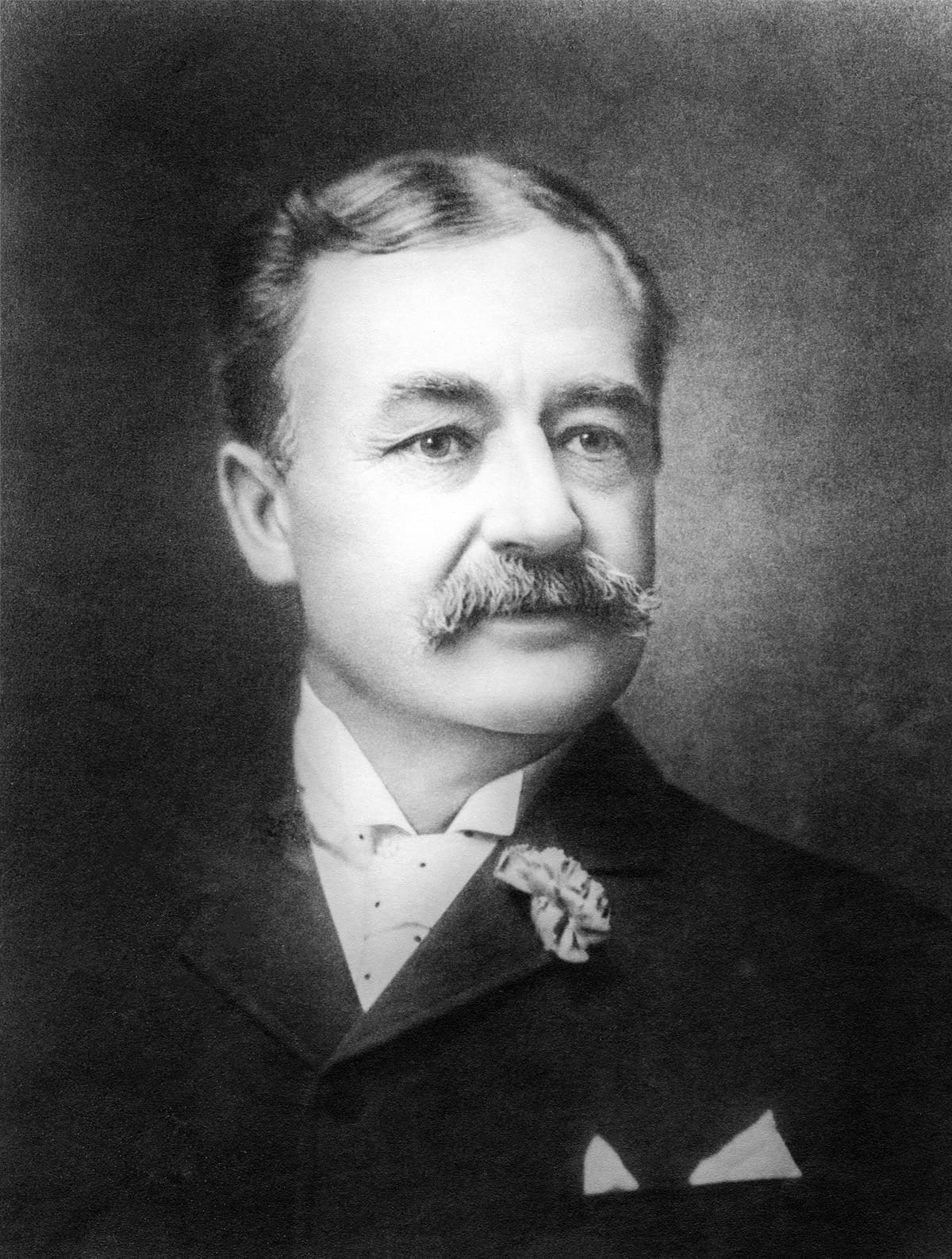
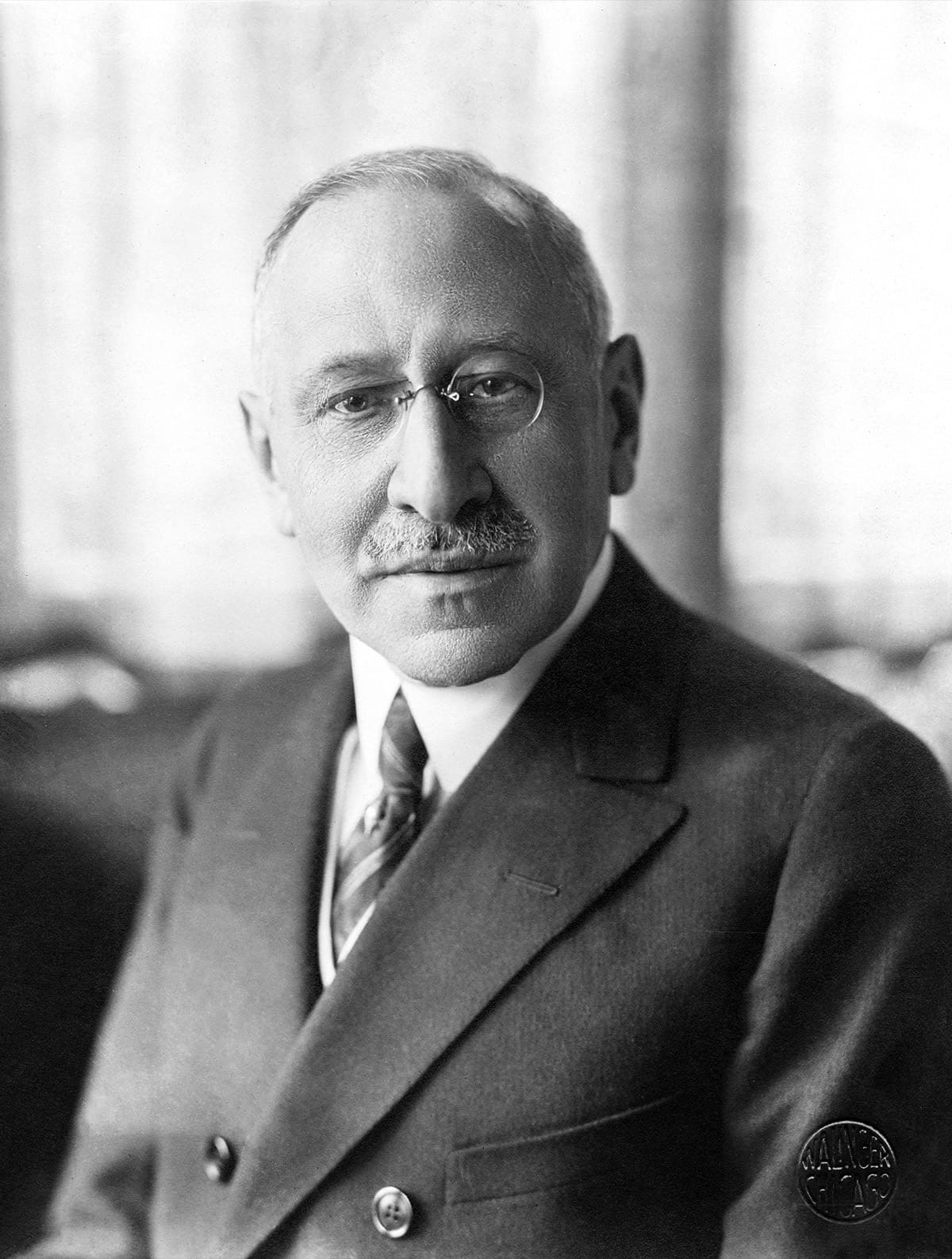
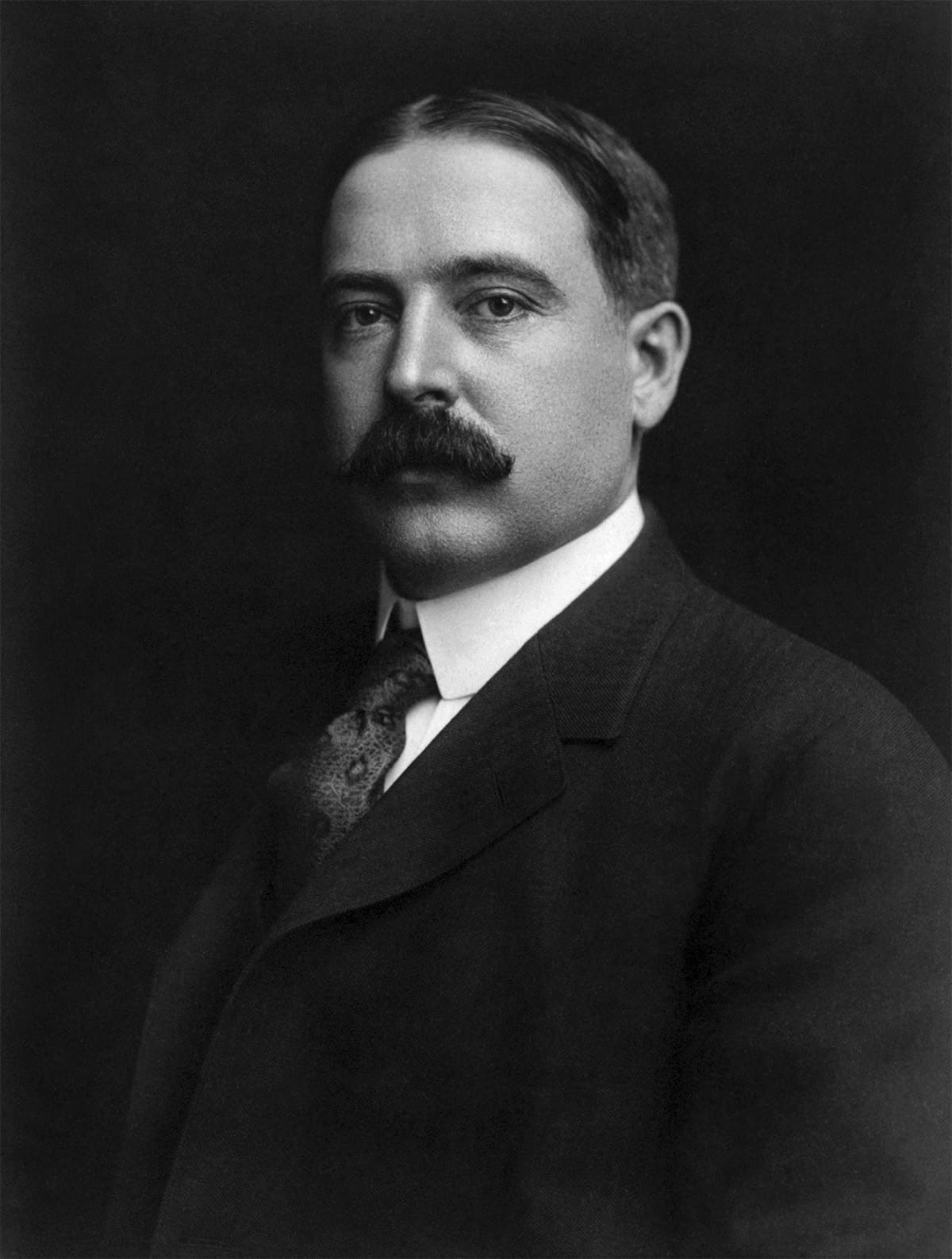
Humble Beginnings and Rapid Growth
1871 The Great Chicago Fire Destroys Chicago – Including Ward’s First Warehouse
On October 8, 1871, the Great Chicago Fire left a path of destruction nearly four miles long and almost a mile wide across the city. Among the rubble was the new warehouse of Montgomery Ward. Along with two partners, Ward had put all his savings into filling up a warehouse with general merchandise to be sold to farmers via mail order catalog. But along with the rest of the city, Ward would rebuild.
1872 The First Ward Catalog Is Distributed
After restocking his warehouse in the months following the fire, the first Montgomery Ward catalog was issued on August 18, 1872. According to the Chicago History Museum, the catalog was a single sheet of paper that listed 163 different items. Ward promised his customers, who were mostly rural farmers, “Satisfaction guaranteed, or your money back.”
Paul Durica, director of exhibitions at the museum, told Chicago Stories that because Ward had worked with his hands, he could relate to farmers. “He knows what they need, and so he listens to their needs and he uses the same language that they use.”
Despite some initial negative press that expressed skepticism of Ward’s business model (who would want to buy something they hadn’t seen before?), the catalog grew to 32 pages in 1874, a mere two years later. By 1876, it had expanded to 152 pages. It was an “everything store” on paper.
1887 Richard Sears Moves to Chicago
Competition was coming for Montgomery Ward. In 1887, Richard Sears wanted a more convenient center of operations for his growing company, then called the R. W. Sears Watch Company, so he moved to Chicago. He was now teamed up with Alvah Roebuck and able to deliver on his own guarantee that his watches would last six years. At this point, their company sold mostly watches and other jewelry. Their own catalog would launch the following year.
1889 Ward Reaches New Heights While Richard Sears Temporarily Retreats
By 1889, Montgomery Ward had reached nearly $2 million in annual sales. Meanwhile, Sears, who was exhausted from the long hours it took to grow his company, sold the R. W. Sears Watch Company for $72,000 and left Chicago.
1893 Sears Returns and Launches the War on Ward
Sears couldn’t stay away too long. After only a couple of years, Sears reunited with Roebuck by purchasing two-thirds of his company. In 1893, they changed the name of the company to Sears, Roebuck, and Co., and released their first catalog under the new name. Outside their offices, the world was in economic turmoil. The Panic of 1893 was an economic depression that saw many Americans, including the farm families that were Ward’s customer base, short on cash.
Sears capitalized on that. The Montgomery Ward catalog pushed quality items that came at a higher cost. The Sears catalog, however, sold far cheaper items. The quality often suffered as a result.
“You end up buying that cheaper good over and over. And by the time you bought it three or four times, you could have bought that quality,” local historian Shermann “Dilla” Thomas told Chicago Stories. “We refer to that as ‘the poor tax.’”
This business strategy, according to Durica, is what separated the two men. While Ward claimed to have the cheapest supply house in America, Sears opted for a more grandiose slogan: cheapest supply house on Earth.
“I don't think Ward would ever make that claim probably because it couldn't be backed up by facts. Sears isn’t beholden to the same sort of level of rigor and he’s going to make the boldest claims that he can get away with,” Durica says.
By the next year, the Sears catalog expanded to include sewing machines, bicycles, musical instruments, sports equipment, and more. Sears continued his rhetorical trickery, selling a “$1 sewing machine.” Customers who ordered such a machine received a needle and thread.
1895 Sears Buys Out Roebuck and Partners with Julius Rosenwald
Sears was a risk-taker. His partner, Roebuck, was not. With big sales, low prices, and satisfaction guarantees, the company often faced cash flow and inventory problems. If they didn’t have the product someone had ordered, they would send a substitute. With lots of returns coming in, Roebuck grew concerned. Sears bought him out of the company for $25,000.
With cash flow management issues, he turned to clothing manufacturer Julius Rosenwald. Sears already owed Rosenwald’s company money for clothing he was selling at a discount in his catalogs, so it was an acquisition that benefitted Rosenwald financially. While Sears served as the voice of advertising and sales, Rosenwald became the details person with business sense – someone the company desperately needed to get on a stronger financial footing. The company kept its name, as Rosenwald, who was Jewish, worried antisemitism would result in a decline in sales.
The Mail Order Giants
1900 Sears Sales Surpass Montgomery Ward
The competition was heating up for Montgomery Ward. In 1900, Sears surpassed Montgomery Ward in sales for the first time, with $10 million in sales for that year.
1902 The U.S. Postal Service Makes “Rural Free Delivery” A Permanent Fixture for the Entire Country
Before the turn of the twentieth century, the U.S. Postal Service had begun experimenting with free delivery to rural areas. Within a year, it was available in 29 states. By 1902, the experiment was considered a success, and rural free delivery was made permanent across all 50 states. Mail from the mail order giants could now effectively reach every corner of the country. Business would boom.
1906 Sears Opens Its Massive Merchandise Building
To meet growing demand, Sears moved into a sprawling, brand-new structure in Chicago’s Homan Square neighborhood. More than 9,000 employees worked at the 40-acre campus. It included all kinds of perks for its employees – a YMCA, athletic fields, classes, and a health clinic. Executives got an additional perk: a new invention called air conditioning. According to the city’s landmark designation, the new headquarters and mail order plant “fulfilled Rosenwald’s goals of better company organization, greater efficiency in filling orders, and a more sound financial footing.” It worked, as that same year sales topped $50 million. See what remains of the Merchandise building with this photo essay.
1908 Montgomery Ward Catalog House Opens and Sears Retires
Though it may have been lagging behind Sears in sales, Montgomery Ward was also on the rise. It had outgrown its “busy beehive” and moved into its 1.25-million-square-foot warehouse and office building on Chicago Avenue along the North Branch of the Chicago River. The building was so large that some employees got around on roller skates. Meanwhile, across the city, tensions had risen between Richard Sears and Julius Rosenwald, who had refined some of Sears’s earlier business practices and toned down his over-the-top advertising claims. Partially due to that friction, at the age of 45, Sears retired from the company, selling all his shares and walking away with $25 million.
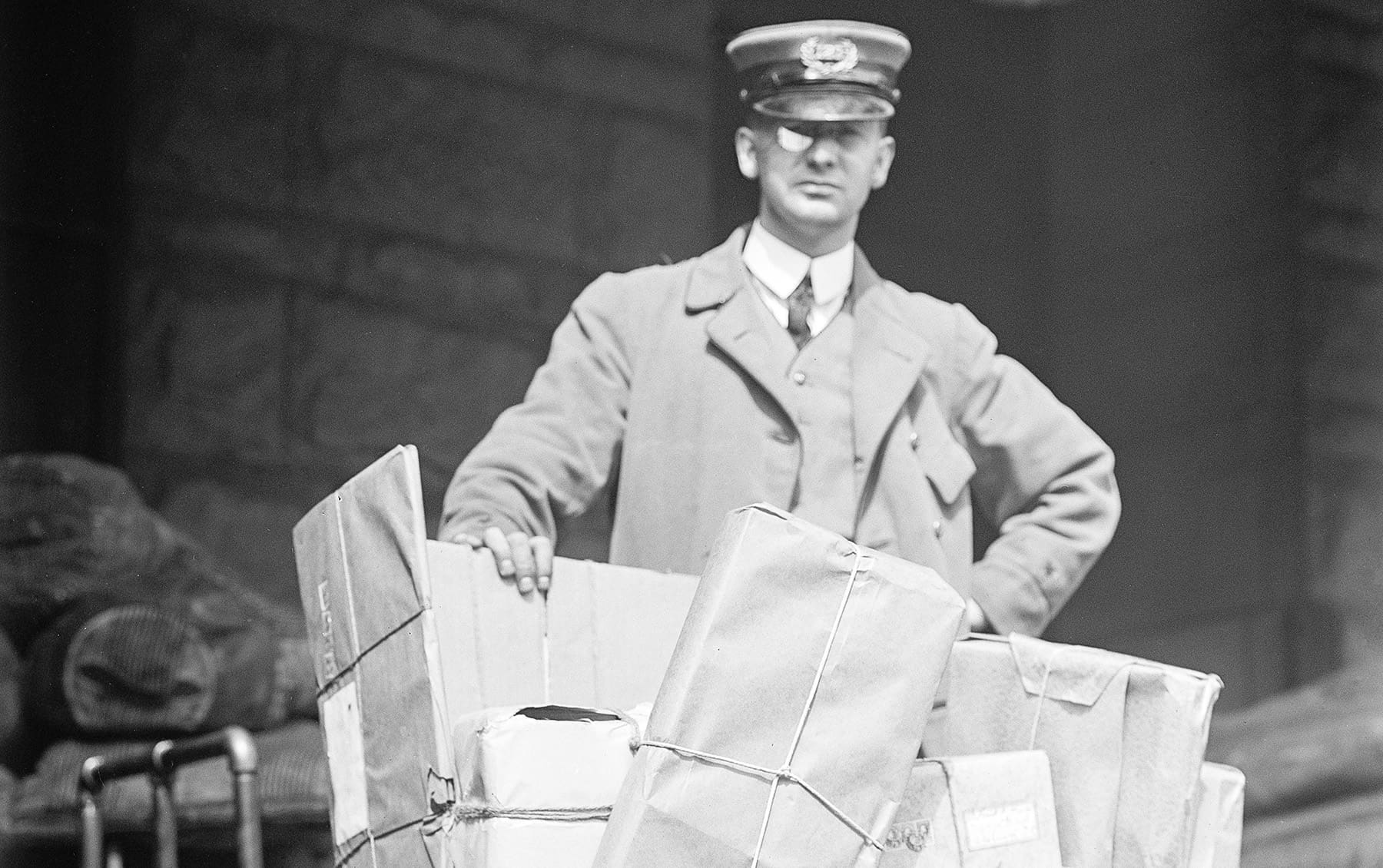
1913 The Postal Service Does More Heavy Lifting and a Business Legend Dies
In 1913, the mail order giants got another boon to their business: the U.S. Postal Service began delivering packages up to 11 pounds. But as this hastened a new era for the companies, another era ended: Aaron Montgomery Ward died at the age of 69. He is interred in Rosehill Cemetery on the Northwest Side.
1914 Richard Sears Dies
Richard Warren Sears died of liver disease the year after Ward at the age of 51.
From Mail Order Giants to Retail Titans
1924 Amid Shifting American Habits, Former Montgomery Ward Executive Goes to Work for the Competition
By the 1920s, Sears and Montgomery Ward catalogs were hundreds of pages and reached millions of mailboxes across America. More and more people were living in cities instead of rural areas. Their habits began to change as things such as home appliances and the automobile became more ubiquitous. That called for new leaders with a new vision of how to run the mail order giants.
Enter General Robert E. Wood. A former quartermaster who worked on the Army’s construction of the Panama Canal, Wood worked for Montgomery Ward, eventually becoming a vice president at the company. He believed retail would better suit the changing habits of Americans, but his fellow Montgomery Ward executives did not share that belief. In 1924, Wood went to work for the rival, becoming a vice president and later president of Sears. Wood pushed for brick-and-mortar stores on the edge of cities, where the land – which had ample room for parking lots – was more affordable. Their customers, now more mobile thanks to automobiles, would meet them there.
In the years that followed, Sears began to create its own name-brand products, such as Allstate tires, Craftsman tools, and Kenmore appliances. Sears products could be found in any room of the American household. Sears also purchased a radio station, giving it the call letters WLS, which stood for World’s Largest Store. By 1925, Sears’s sales reached $234 million. Montgomery Ward, which opened smaller shops in rural areas and department stores in cities, was now earning tens of millions less than Sears annually.
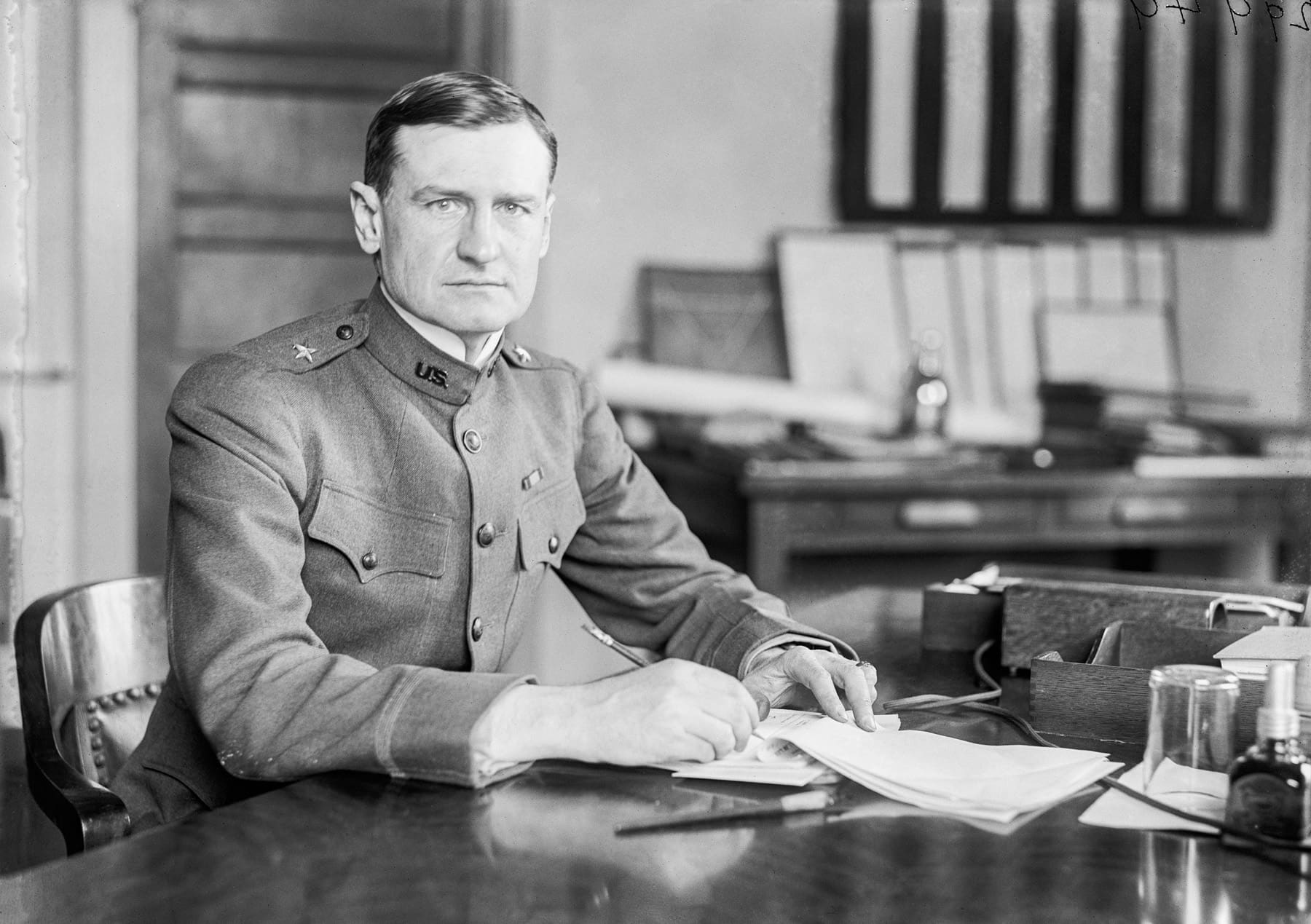
1931 Sears Retail Pulls Ahead of Mail Order
Though the American economy was still in disarray two years after the stock market crash that led to the Great Depression, Sears weathered the storm. In 1931, Sears earned more revenue from its stores than it did from its mail order operation for the first time.
1932 Julius Rosenwald Dies
Julius Rosenwald, who had retired as president of Sears several years earlier, died at the age of 69. Read more about Rosenwald’s philanthropic legacy.
1936 Sewell Avery Takes the Helm at Montgomery Ward
Montgomery Ward got a new leader in Sewell Avery, an anti-union conservative who arrived at the company to close stores and cut costs. Durica told Chicago Stories that two of America’s largest retailers were now led by conservative, anti-union men – Avery and Wood – who were distrustful of both Franklin D. Roosevelt’s domestic and international policies, as Europe was on the brink of war. That opposition would reach a critical point for Avery six years later.
1939 Montgomery Ward Introduces Its Beloved Red-Nosed Character
Ahead of Christmas in 1939, one of the mail order giants gave Americans a gift that would last for generations. That year, Montgomery Ward gave out a free children’s book about a reindeer named Rudolph who had a red nose. He was the brainchild of catalog copywriter Bob May. Read more about how Rudolph the Red-Nosed Reindeer became a beloved holiday fixture.
1944 Sewell Avery Is Forcibly Removed from His Office
In 1942, 7,000 Montgomery Ward employees voted to unionize. Because Montgomery Ward was supplying the U.S. government with supplies for the armed forces, it fell under the authority of the War Labor Board, which mediated labor disputes between employees and companies to avoid strikes that might impede the wartime production effort during World War II. Avery, however, failed to recognize or negotiate with the union. In 1944, the employees threatened to strike, and the government forcibly removed Avery from his office after he refused to cooperate. Avery’s tough leadership didn’t do much for the company’s sales over the next decade, as competitors such as J.C. Penney began to outpace Montgomery Ward.
1962 New Competitors Enter the Market
After a very successful 1950s in which Sears was earning $3 billion in annual sales, new competition emerged in the form of discount stores. In 1962, companies such as Kmart, Walmart, and Target all opened their doors for the first time that year, offering an alternative for price-conscious shoppers. But Sears was still dominant. According to Cecil C. Hoge’s book The First Hundred Years Are The Toughest, Sears was now the world’s largest retailer, and nearly half of American households had a Sears charge card.
1973 Sears Tower Is Completed
In 1973, Sears Tower was completed. The company moved from its administrative headquarters in Homan Square to its brand-new building, which became at that time the tallest in the world. But even as Sears reached new heights, change was on the horizon.

Giants No More

1985 Montgomery Ward Ends Its Catalog Operations
As specialty mail order catalogs, such as LL Bean and Victoria’s Secret, arrived in Americans’ mailboxes, Montgomery Ward couldn’t keep up with the competition. It permanently ended its catalog operations in 1985.
1990 Walmart Becomes America’s Largest Retailer
Sears lost its position as the top retailer in the country, as Walmart eclipsed the former giant in sales. Kmart took second place that year, leaving Sears in third place as its revenue growth slowed.
1993 Sears Ends Its Catalog Operations
In 1992, Sears moved its company headquarters to suburban Hoffman Estates. The next year – 100 years after the first Sears, Roebuck, and Co. catalog was distributed – Sears ended its catalog operations for good. In an attempt to boost its fading financial health, the company also sold off its insurance products and financial services.
1997 Montgomery Ward Files for Bankruptcy
One of America’s mail order giants, Montgomery Ward, filed for bankruptcy in 1997. Despite its attempt to start a small internet operation, the company was not able to hang on. In the years that followed, the internet would reinvent the “everything store,” the very concept that Aaron Montgomery Ward invented more than a century prior.
2001 Montgomery Ward Closes All Stores
Though the company attempted to stay afloat by closing some stores, renovating others, and rebranding as Wards, the company closed all stores right after the 2000 holiday shopping season, laying off 28,000 employees.
2004 Kmart Buys Sears
Sears would follow in Montgomery Ward’s footsteps. In 2004, Kmart purchased a struggling Sears. More than a decade later, the company reorganized through bankruptcy as e-commerce giants such as Amazon took over, reshaping consumer habits as Sears once had. Sears still exists, though only a handful of stores remain.

